 |
by Nathan Ingraham on (#6HP7F)
AI is literally everywhere, so it's not a big surprise to learn that Volkswagen is planning to bring ChatGPT to its vehicles. As part of its CES 2024 announcements, the automaker says that its existing IDA voice assistant will work with ChatGPT across a range of its newer models. VW isn't the first to try this - Mercedes-Benz announced ChatGPT integration in June of last year, so it seems like this is certainly a thing we're all going to have to get used to.Specifically, VW says that ChatGPT will be enabled in these specific models with the latest generation of the company's infotainment systems: ID.7 (pictured above), ID.4, ID.5, ID.3, the new Volkswagen Tiguan, the new Passat and the new Golf. It'll roll out ChatGPT as as "standard feature" in "many" production vehicles in Q2 of 2024; the company didn't say in which regions, but notes that the feature is only currently "being considered" for the US market.As for what it can do, it sounds like ChatGPT will be used to enhance the existing capabilities of VW's voice assistant as well as offer some new conversational tricks. VW notes how its assistant can already do things like control the infotainment system, navigation, climate control and other such features. With the addition of ChatGPT, VW envisions interactions with more intuitive, back-and-forth language. That's something we're seeing from companies like Google and Amazon as they explore how to enhance Google Assistant and Alexa, so the same may apply here. VW's press release specifically cites "enriching conversations, clearing up questions, interacting in intuitive language, receiving vehicle-specific information" as things that ChatGPT can enable.One good thing is that this will all be built into the car without the need for a driver to really set anything up. As you can now, you'll activate the voice assistant - and if the car's standard system can't adequately answer the query, it'll anonymously send it to ChatGPT. The company stresses that ChatGPT doesn't get any information about the vehicle and questions and answers are deleted immediately.I'll admit that I was initially skeptical of how something like ChatGPT could be used in a car - but if it can in fact better understand and answer queries that are important when you're behind the wheel, I'm willing to give it a shot. VW didn't say if it would have any demos of this new tech at CES this year, but we'll be looking to see if we can experience it for ourselves.We're reporting live from CES 2024 in Las Vegas from January 6-12. Keep up with all the latest news from the show here.This article originally appeared on Engadget at https://www.engadget.com/volkswagen-thinks-chatgpt-integration-will-make-its-in-car-voice-assistant-good-160033466.html?src=rss
|
 Engadget is a web magazine with obsessive daily coverage of everything new in gadgets and consumer electronics
Engadget is a web magazine with obsessive daily coverage of everything new in gadgets and consumer electronics
| Link | https://www.engadget.com/ |
| Feed | https://www.engadget.com/rss.xml |
| Copyright | copyright Yahoo 2025 |
| Updated | 2025-12-20 13:03 |
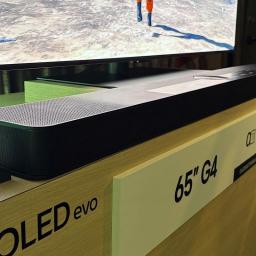 |
by Billy Steele on (#6HP7G)
LG is one of many companies that usually shows off new soundbars in Las Vegas, and at CES 2024, that trend continues. While the new models are designed to compliment LG TVs, they offer something different in terms of audio, design and features. The most robust option, the S95TR, is a 9.1.5-channel setup that comes bundled with a subwoofer and rear speakers.The flagship S95TR musters an output of 810 watts and is what the company calls the first Atmos-equipped soundbar with triple up-firing channels. Those include what LG says is the industry's first center up-firing speaker. That center driver helps with the dimensionality of the sound by boosting clarity and the overall soundstage. Two tweeters handle the treble while a passive radiator offers low-end tone in the correct relation to the wireless subwoofer. The S95TR employs Wowcast Built-in to wirelessly receive audio, including Dolby Atmos and DTS:X, from LG TVs. The company says the tech can even handle lossless-quality sound without a wired connection.Indeed, the audio quality from the S95TR is big and boomy. Aided by rear speakers with three drivers, the sound from the complete setup was full, with punchy highs and bombastic bass when a scene demanded it. Last year, LG nixed the wireless transmission box that sat between the rear speakers on the S95TR's predecessor, opting instead to put that tech inside the speakers themselves. That's still the case, but the company decided to forgo the box on rear speakers that are sold separately this year. You still need to run a cable between them, but an added piece of hardware isn't required when expanding your setup.To match up with its premium OLED TVs, LG has introduced the SG10TY. This is a flatter, low-profile option that looks at home situated below the company's M series. It's a 3.1-channel unit that can be expanded to a 5.1-channel setup with the addition of rear speakers. I wasn't able to hear this one during my demo, but I can tell you that it looks quite striking with those LG OLED TVs. And while it doesn't offer the sonic power of the S95TR on paper, I'm willing to bet some people will be just fine sacrificing a bit of dimensionality for improved aesthetics. Thanks to Wowcast Built-in, the wireless audio means you won't have visible wires just to get Dolby Atmos, further enhancing the clean look.LG SG10TY soundbarPhoto by Billy Steele/EngadgetThese two models offer the Wow interface, which puts soundbar settings and sound modes on a menu on the TV. They are also all both equipped with the company's Wow Orchestra tech that ensures the best audio quality thanks to "an enlarged soundstage and improved depth and height." This should particularly come in handy for Dolby Atmos and DTS:X content. LG's AI room calibration now factors in the rear speakers in a surround sound setup, adjusting for the proper sound no matter where you put them. The company says the tweak can even happen if the rear speakers are setup at uneven distances due to furniture or other living room constraints.There's no word on pricing or availability for either of the new soundbars, but we'll likely hear more as launch day approaches for each one. In the meantime, these are our reigning picks for the best soundbars currently available on the market.We're reporting live from CES 2024 in Las Vegas from January 6-12. Keep up with all the latest news from the show here.This article originally appeared on Engadget at https://www.engadget.com/lg-s95tr-and-sg10ty-first-look-two-takes-on-wireless-dolby-atmos-for-home-theater-154551736.html?src=rss
|
 |
by Devindra Hardawar on (#6HP7H)
AMD was the first company to deliver x86 laptop chips with NPUs for AI acceleration last year - now, at CES 2024 it's doing the same for desktops. The company's new Ryzen 8000G processors, which debuted today in Las Vegas (but have already been leaked by retailers), are once again NPU pioneers among x86 desktop chips. And on top of that, the company claims its built-in Radeon 700M graphics are the fastest ever seen on a desktop chip.While the Ryzen 8000G chips aren't AMD's most powerful desktop offerings - the Ryzen 7700X and above all offer higher clock speeds, core counts and onboard cache - AMD says the new processors could be compelling options for gamers trying to build capable systems on a budget. The fastest model, the Ryzen 7 $329 8700G, is an eight-core chip running between 4.2GHz and 5.1GHz, sporting Radeon 780M graphics.According to AMD, that processor averages 90 fps in Baldur's Gate 3 in 1080p with low detail settings and the company's Hyper-RX and Fluid Motion Frames features turned on. (The latter is a bit controversial, since it can make gameplay look smoother and deliver higher fps counts, but it's also early technology and it's interpolating even more frames than AMD's FidelityFX Super Resolution 3.0.) Without any of those extra features, the 8700G still hits a respectable 58 fps in Baldur's Gate 3.Of course, not many people, especially self-proclaimed gamers, would actually want to play with the lowest graphics settings. But if you're on a budget and building a system piece-by-piece, the 8700G and the rest of the 8000G family could at least let you play something before buying a dedicated GPU. AMD also claims its built-in graphics are significantly faster than Intel's latest offerings. According to the company's benchmarks, the 8700G is four times as fast in Hitman 3 in 1080p compared to the Intel i7-17400K's UHD 770 graphics.Even if you're not intrigued by the Ryzen 8000G Series' graphics potential, its NPU still makes it a unique desktop chip. Much like the NPU's we've seen on AMD's recent mobile chips, as well as Intel's new Core Ultra hardware, it'll let you speed up AI tasks without hitting your CPU or GPU. At the moment, NPUs enable features like Windows Studio Effects, which can blur your background during video chats, as well as media editing in Adobe and DaVinci software. NPUs are more compelling on laptops now, as they can help systems be more efficient and potentially save battery life. But having an NPU on your desktop chip today could be a smart way to future-proof your build.Speaking of those AI accelerators, AMD also teased the performance of its new Ryzen 8040 mobile chips at CES - specifically, by putting them head-to-head with Intel's Core Ultra hardware. AMD says the Ryzen 7 8840U is almost 80 percent faster than the Core Ultra 7 155H while running the Deeplabv3 neural architecture, and it's 43 percent faster while running Yolov8. More useful to consumers, though, are AMD's claims about content creation: the company says the 8840U is 85 percent faster than the Ultra 7 155H while running DaVinci Resolve's HD to UHD enhancement.But AMD didn't just stop there: It also says that new Ryzen chip is 60 percent faster than Intel's while playing Far Cry 6 in 1080p with low graphics settings. Similarly, AMD says the Ryzen 8840U is 52 percent faster than Intel's hardware in both Handbrake and LAME. We'll have to take these numbers with a huge grain of salt, but if they're accurate it means Intel could end up lagging behind AMD for another year.To round things out for entry-level and mid-range buyers, AMD also announced a new batch of Ryzen 5000 chips for its older AM4 architecture. They're spearheaded bv the $249 Ryzen 7 5700X3D, an eight-core chip featuring 100MB of 3D V-Cache, running between 3GHz and 4.1GHz. The most affordable new option is the $125 Ryzen 5 5500GT, a quad-core chip that can reach up to 4.4GHz.We're reporting live from CES 2024 in Las Vegas from January 6-12. Keep up with all the latest news from the show here.This article originally appeared on Engadget at https://www.engadget.com/amd-brings-ai-to-ryzen-8000g-desktop-chips-at-ces-2024-153032800.html?src=rss
|
 |
by Devindra Hardawar on (#6HP7J)
Even though gamers have been eager to see new high-end GPUs from AMD, the company isn't ready to refresh the Radeon RX 7900 and 7900 XT at CES 2024. Instead, AMD is unveiling the $329 Radeon RX 7600 XT in Las Vegas, a slightly souped-up version of last year's entry-level RX 7600 with higher clock speeds and 16GB of VRAM. While that earlier card was laser-focused on 1080p gameplay, AMD is positioning the RX 7600 XT as a potential upgrade for entry-level 1440p gaming, as well as a better card for running AI tasks.The Radeon RX 7600 XT features the same basic specs as its predecessor: 32 compute units and ray accelerators; 64 AI accelerators; and 2,048 stream processors. But its clock speeds now range from 2.47GHz to 2.76GHz (in boost mode), instead of 2.25GHz to 2.66GHz. Having 16GB of VRAM will also give it more headroom for handling larger textures in 1440p, content creation and larger AI workloads.According to AMD's benchmarks, the Radeon RX 7600 XT performs slightly better than the RX 7600 in most titles: It averages 71 fps in Starfield while playing in 1080p with maxed-out settings, compared to 61fps on the 7600. But the improvements are more dramatic in AMD-optimized titles like Forza Horizon 5: the new GPU averages 94 fps in 1080p with FSR 2 and RT Extreme flipped on, compared to 67 fps on the RX 7600.In 1440p, the RX 7600 XT averages 60 fps with maxed out graphics settings in Starfield and Shadow of the Tomb Raider. Its predecessor average 53 fps and 54 fps, in comparison. Forza Horizon 5 also shines in 1440p: It averages 81fps on the new GPU compared to 56 fps on last year's model. AMD is also lording its scores over the NVIDIA RTX 4060 8GB: the RX 7600 XT averages 245 fps in Modern Warfare III in 1080p with FSR and frame generation turned on. The 4060 8GB, meanwhile, reaches 146 fps with DLSS3 and its own frame generation.Of course, the better comparison would be the RX 7600 XT against 16GB RTX 4060 GPUs, but those scores were conspicuously absent from AMD's press materials. The big takeaway, though, is that the 7600 XT should be a solidly more capable GPU than the 7600.The Radeon RX 7600 XT will be available on January 24 from its AMD's board partners (ASUS, Acer and the like) for $329.We're reporting live from CES 2024 in Las Vegas from January 6-12. Keep up with all the latest news from the show here.This article originally appeared on Engadget at https://www.engadget.com/amd-debuts-the-radeon-rx-7600-xt-at-ces-for-entry-level-1440p-gaming-153023517.html?src=rss
|
 |
by Sarah Fielding on (#6HP4B)
Garmin has a few pieces of news to share at CES 2024, including a heart rate monitor marketed to women that can deliver an accurate heart rate reading even when attached to a sports bra. The $150 device, called the HRM-Fit, is a "first of its kind," according to Garmin. It should fit what Garmin describes as medium- and high-support sports bras, including select models from Adidas, Under Armour and other brands. It's also compatible Garmin smartwatches to report your pace, distance and stride length. If you leave your watch at home, the clip-on device can store workout data like calories burned and intensity, then load it to your watch once it's back in range.Other new Garmin products for CES 2024 include the Lily 2 smartwatches with a 35mm metal case. The Lily 2 retails for $250, while the Lily 2 Classic is available for $280. They both come with heart rate monitoring, sleep quality ratings and a connected GPS. The Lily 2 smartwatches also have move alerts with suggested activities, fitness tracking and a sports app. Only the Lily 2 Classic offers Garmin Pay contactless payments.Lastly, the company has a pretty major refresh in store for both the web version of its Garmin Connect app as well as the mobile version. Its homepage now features customizable sections like Today's Activity, Training Plans and In Focus. This update is now available to beta testers and should fully roll out later this year.We're reporting live from CES 2024 in Las Vegas from January 6-12. Keep up with all the latest news from the show here.This article originally appeared on Engadget at https://www.engadget.com/garmin-debuts-a-first-of-its-kind-heart-rate-monitor-that-works-with-sports-bras-144910862.html?src=rss
|
 |
by Kris Holt on (#6HP4C)
Those who've been yearning for a chance to try the Apple Vision Pro headset and have the cash to spare won't need to wait much longer to snap one up. The company says the hotly anticipated device will arrive in the US on February 2. Pre-orders for the mixed reality headset, which starts at $3,499 for 256GB of storage, will open on January 19. The device will be available at all US Apple Store locations as well as through the company's web store.Those who require vision correction will need to snap up Zeiss optical inserts and attach them to the headset magnetically (Vision Pro doesn't work with glasses). Readers will cost $99, while prescription lenses will set you back $149. The inserts will only be available for purchase online, so don't expect to be able to wander into an Apple Store to pick them up. Naturally, you'll need a prescription for the prescription lenses. However, Apple says that "not all prescriptions are supported."
|
 |
by Steve Dent on (#6HP4D)
HP has unveiled the Omen Transcend 32 OLED gaming monitor with high-end specs and new features that should make it a pretty darn good productivity monitor, too. It's part of the company's newly launched Omen lineup at CES 2024, which includes the world's lightest gaming laptop.The Omen Transcend 32 looks like an impressive gaming monitor, even before looking at the other new tricks. It uses LG's latest QD-OLED tech and features a 31.5-inch screen with 4K resolution and a 240Hz refresh rate, with a 0.3-millisecond response time. It's the company's first Omen display that's Dolby Vision certified, offering 99 percent DCI-P3 coverage and VESA DisplayHDR True Black 400 certification with peak brightness up to 1,000 nits.On the gaming side, it also supports AMD's FreeSync Premium Pro and is likely G-Sync compatible as well. You can enhance the mood with aRGB back lighting and it uses Omen's "Tempest" technology to cool the OLED panel during prolonged gaming sessions. Audio-wise, it uses HP's HyperX tech, which connects to Omen's Gaming Hub to allow for customized EQ and other settings.HPIf you're one to alternate gaming with productivity or content creation, it has some truly interesting additional features. It comes with KVM switchable inputs that let you run two devices (including keyboard and mouse) from the same display without having to change cables or use a switching box. On top of that, a picture-in-picture mode shows what's happing on both devices at one.That KVM functionality also allows for control of more than one computer at the same time and even the ability drag and drop files across devices, according to HP. All of that could allow you to play a game, all while doing spreadsheets or attending a Zoom meeting - a nice feature for users but perhaps not their bosses.Another big feature is USB-C with DisplayPort alt mode and 140 watts of power delivery, enough for even powerful gaming laptops. Other features include Dual HDMI 2.1 ports, the latest DisplayPort 2.1, two USB-C 3.2 ports (each with 15 watts of power delivery) and a pair of USB-A 3.2 ports. Finally, it has a three-year warranty to guard against potential burn-in, much like Alienware's latest QD-OLED monitors.The Omen Transcend looks like a desirable monitor, but like many devices launched at CES 2024, it won't be available for awhile. It's set to arrive sometime mid-next year, with pricing to be announced at a later date.We're reporting live from CES 2024 in Las Vegas from January 6-12. Keep up with all the latest news from the show here.This article originally appeared on Engadget at https://www.engadget.com/hps-new-4k-240hz-oled-gaming-monitor-lets-you-drag-and-drop-files-across-devices-140507464.html?src=rss
|
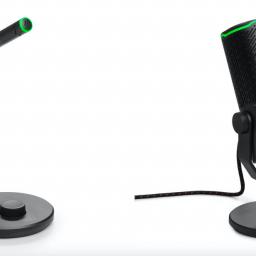 |
by Lawrence Bonk on (#6HP19)
JBL is best known for speakers, earbuds and headphones, but the company has recently pivoted to microphones to meet the needs of modern content creators. It all started with the Quantum Stream line of condenser microphones, and the company has brought a trio of updated mics in the series to CES 2024 in Las Vegas.The Quantum Stream Talk, as the name suggests, is primarily for podcasters and streamers. The condenser boasts a super cardioid pickup pattern so it only captures what's directly in front of it, which will be your mouth. This drastically reduces background noise, as that's the bane of any podcaster. The shock-absorbing base assists with noise reduction. The mic costs $50 and releases in March.JBLThe Quantum Stream Wireless microphone kicks it up a notch. This wireless condenser is actually wearable, via a clip-on design. The mic is intended for on-the-go recording, as it boasts an omnidirectional pickup pattern that captures audio from every direction. This captures ambient noise, of course, but that could be the point when making field recordings and the like. There's an included algorithm to reduce unwanted environmental noise and the mic ships with a handy case. The Quantum Stream costs $100 and also launches in March.Finally, the flagship microphone is called the Quantum Stream Studio. This is a professional-grade condenser that shines as a podcasting microphone, but should also be great for music-making, voice-over work and related tasks. The interior boasts three condenser capsules and captures audio in 192 kHz/24 bits, which is a broadcast quality sampling rate. There are four pickup patterns to choose from, depending on your needs, and an integrated compressor to handle sudden bursts of noise. The Stream Studio is available this March for $150.All of these microphones integrate with JBL's updated app, which is typically used to adjust headphone parameters. The upgraded app now offers microphone controls, so you can dial in the perfect sound directly from your phone instead of having to mess with buttons and knobs. These microphones are all available to demo at CES, if you happen to be in Las Vegas.We're reporting live from CES 2024 in Las Vegas from January 6-12. Keep up with all the latest news from the show here.This article originally appeared on Engadget at https://www.engadget.com/jbl-brings-new-microphones-to-ces-2024-including-a-wireless-clip-on-model-130058745.html?src=rss
|
 |
by Billy Steele on (#6HP1A)
Last year in Las Vegas, JBL showed off a set of true wireless earbuds that featured a touchscreen-equipped "smart case," but it was only available on that model. For CES 2024, the company is expanding the availability for the fancy charging accessory across three new earbud designs, while giving it a slight design update in the process. The Live Buds 3, Live Beam 3 and Live Flex 3 all feature customizable adaptive noise cancellation, LDAC support for high-res listening, six mics for calls, wireless charging and multipoint Bluetooth connectivity.The difference between the three is primarily design and fit. The Live Buds 3 are the more "traditional" style of earbuds while the Live Beam 3 and Live Flex 3 are both AirPods-like stick buds. What's more, the Beam 3 completely seal off your ears while the Flex 3 are a more open-style option. The Flex 3 are also IP54 rated while the other two are IP55 and they pack in larger 12mm drivers where the Buds 3 and Beam 3 have 10mm components. Aside from design, the trio differs on battery life too. The Live Buds 3 give you 10 hours of use with active noise cancellation (ANC) off with three full charges in the case. The Live Beam 3 last up to 12 hours with ANC off, plus they offer another three charges via the case. Lastly, the Live Flex 3 provides 10 hours of use with four full charges in the case.All three models in the Live 3 earbuds series will be available for $199.95 starting this summer. The company is planning to add LE audio for Bluetooth 5.3 to all three via an over-the-air update after launch.JBLIf you prefer earbuds that sit just outside of your ears, JBL's new Soundgear Sense will beam in music and podcasts without completely blocking the outside world. 16.2mm drivers power the audio for the over-the-ear hook design and JBL includes a detachable neckband if you need it. Plus, those ear hooks are adjustable to help you fine-tune the fit. The Soundgear Sense are IP54 rated against water and dust, with four microphones for calls and Bluetooth multipoint connectivity for added convenience. The Soundgear Sense will be available for $149.95 when they start shipping in March.And if wired USB-C earbuds are more your thing, JBL has a new option there too. The Tune 310C has a three-button, in-line remote for playback and call controls alongside high-resolution listening powered by a built-in DAC (digital-to-analog converter). There's also an onboard mic for calls and EQ presets for customizing the sound profile. The Tune 310C will be available in March for $24.95.We're reporting live from CES 2024 in Las Vegas from January 6-12. Keep up with all the latest news from the show here.This article originally appeared on Engadget at https://www.engadget.com/jbl-brings-its-touchscreen-smart-case-to-three-new-wireless-earbud-models-130052055.html?src=rss
|
 |
by Jon Turi on (#6HP1B)
When it comes to portable Bluetooth speakers, battery life has always been a sticking point and JBL's latest updates are focused on improving just that. As part of its announcement today at CES 2024 in Las Vegas, the company presented two updated PartyBox models and three new personal portable iterations. Aside from the battery upgrades, they all support Bluetooth 5.3 with LE audio and Auracast for wirelessly connecting countless other Auracast-enabled JBL speakers. Additionally, recycled fabric and plastic play a role in their construction.The new large-format JBL PartyBox Club 120 ($400) and PartyBox Stage 320 ($600) now include easily swappable batteries so you can party well beyond the boundaries of a single charge. The next-gen personal portables include the midsize JBL Xtreme 4 ($380) and the smaller Clip 5 ($80) and Go 4 ($50), all of which have longer runtimes on a single charge. The Xtreme 4 is also now a more reliable long-term investment with a replaceable battery for serviceability.JBL PartyBox 120 (left), JBL PartyBox Wireless Mic bundle (center) and JBL PartyBox 320.JBLIt's been at least a couple of years since we've seen a new version of these specific PartyBox models. (The PartyBox 110 was released in 2021 and the 310 came out in 2020.) Many of the general specs remain the same as the previous iterations for both models. They are still IPX4 rated, which means some drink spills or light rain should be OK. You can still do basic wireless stereo pairing with two speakers for left and right output and control themed lighting displays using the JBL PartyBox app.Although the battery life remains the same as before with up to around 12 hours for the PartyBox 110 and 18 hours for the PartyBox 320, you can now buy additional battery packs and swap them in when needed. This takes some of the worry out of hosting long parties without an outlet nearby. We're still waiting for more info about pricing and availability for the battery packs.Both of these large-format speakers have Bluetooth 5.3 with LE audio and Auracast - a new Bluetooth feature that allows many devices to join the same audio stream. According to JBL, you can connect unlimited Auracast-enabled JBL speakers together for bigger sound. We're still waiting for further details, but it would seem likely that you'd connect via the JBL PartyBox app.The specs list two mic inputs and one guitar input for both of these devices. Previously only the 310 had capability for all three, although it was one mic input and one for dual mic/instrument. If there are indeed now three inputs, it would make sense especially considering the new accessory bundle that's also being announced.For those who are into karaoke or just broadcasting their voice to a crowd, there's also a new PartyBox Wireless Mic ($150) two-mic bundle available now. It's noted as being compatible with all PartyBox speakers. The mics boast a rechargeable 20-hour runtime with an additional 12-hour dongle attachment and 10-minute fast charging for an additional two hours of use. They're also built to minimize handling noise and have a built-in pop filter to get dodge of unwanted breathing sounds.JBL Xtreme 4JBLOne of JBL's larger, yet still personal portable Bluetooth lines is the Xtreme series. It's big enough to warrant a shoulder strap, easy enough to carry around, yet delivers respectable sound. This year the Xtreme 4 offers much the same as the previous generation. It's a resilient IP67-rated speaker, so you can take it pretty much anywhere, rain or shine. And you can charge other devices with its onboard power bank via USB.The new features include an extended battery life of up to 24 hours, plus an additional six if you use the Playtime Boost Mode. It's a nice jump from the previous 15 hours on a charge. This time around, you can also replace the battery, although it's not really swappable'. If your battery starts to fail over time, you don't have to worry about buying a new speaker, you can just replace the battery portion itself.As with all of today's new announcements, the Xtreme 4 runs Bluetooth 5.3 with LE audio and supports Auracast. That means you should be able to join up with any other JBL speakers that also have Auracast.JBL Go 4 (left) and JBL Clip 5.JBLThere's no word on updated Flip or Charge releases yet, so JBL's last new offerings today are the extremely portable Clip 5 and Go 4. Both retain the IP67 rating from before, which is useful considering that they're small enough to clip on things or put in your pocket. Both run Bluetooth 5.3 with LE audio and can also connect with any other JBL Auracast-enabled speakers.The Clip 5 is said to have increased driver power to help optimize the overall audio and provide consistent bass, at least for its size. It offers up to 12 hours of battery life, plus an extra three hours in Playtime Boost mode.The tiny JBL Go 4 is the most portable of the bunch, with an updated exterior design and strap. Its audio output remains the same as before, but its battery life is now up to 7 hours, plus an additional two when listening in Playtime Boost mode.The JBL Xtreme 4, Clip 5 and Go 4 should be available on the company's website in June 2024 and both the PartyBox Club 120 and Stage 320 will be available on the site in April 2024.We're reporting live from CES 2024 in Las Vegas from January 6-12. Keep up with all the latest news from the show here.This article originally appeared on Engadget at https://www.engadget.com/jbl-debuts-replaceable-batteries-for-its-new-portable-bluetooth-speakers-at-ces-2024-130031746.html?src=rss
|
 |
by Billy Steele on (#6HP1C)
It wouldn't be CES without a massive amount of JBL portable audio devices. The company has six new sets of headphones in Las Vegas to go along with several new earbuds, speakers and microphones. As it typically does, the company is covering a range of preferences with on-ear and over-ear options as well as those with active noise cancellation (ANC) and some without it.The JBL Live range is the more premium option, with the on-ear 670NC and over-ear 770NC offering identical spec sheets. The only differences are the style and the price. Inside, 40mm drivers power JBL Spatial Sound with adaptive ANC and a "smart" ambient mode. There are two microphones for calls, multipoint Bluetooth connectivity and automatic pausing. Both will also get LE audio for Bluetooth 5.3 via a future update. The Live 670NC is $129.95 and the Live 770NC is $199.95.The company's more affordable Tune lineup is getting the biggest upgrade with four new models. If you don't need active noise cancellation, the Tune 520BT offers up to 57 hours of listening time for just $49.95. The non-ANC over-ear model, the Tune 720BT, has up to 76 hours of battery life for $30 more. For adaptive ANC with ambient sound mode, the Tune 670NC is the on-ear model and the Tune 770NC is over-ear. Both muster up to 70 hours of playback with ANC off and can hit 44 hours with it enabled. The Tune 670NC has smaller drivers - 32mm versus 40mm - and costs $30 less at $99.95. Both of the noise-canceling models will get LE audio for Bluetooth 5.3 in a pending update.All of the new Live and Tune headphones will be available in March.We're reporting live from CES 2024 in Las Vegas from January 6-12. Keep up with all the latest news from the show here.This article originally appeared on Engadget at https://www.engadget.com/jbl-covers-the-headphone-gamut-with-six-new-models-at-ces-2024-130025848.html?src=rss
|
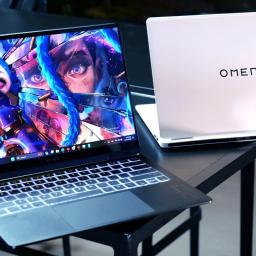 |
by Sam Rutherford on (#6HP1D)
Sometimes the never-ending quest to shave an extra gram or millimeter off a new laptop can become a bore. However, when a company can do it without cutting too many corners, that deserves some attention. And that's what HP has done with the new Omen Transcend 14, which is making its debut at CES 2024 as the lightest 14-inch gaming laptop in the world.Weighing just 3.5 pounds (1.6 kg), the Omen Transcend 14 is much closer in size and lightness to an ultraportable than an average gaming laptop. To put that into context, that's just 0.1 pounds heavier than a 14-inch MacBook Pro and 0.15 pounds lighter than rival super-portable gaming laptops like the ASUS ROG Zepyrys G14. And while it's not quite as powerful as the larger Omen Transcend 16, it certainly won't be hurting for performance thanks to support for 14th-gen Intel Core Ultra 7 or Ultra 9 processor, up to 32GB of DDR5 RAM, 2TB of storage and an RTX 4070 GPU.Critically, despite its petite dimensions, you still get two USB-A and two USB-C ports (one of which supports Thunderbolt 4) plus a full-size HDMI 2.1 jack around back. And for those who want peak wireless speeds, you'll also have the option to upgrade to Wi-Fi 7 card with Bluetooth 5.4.The Transcend 14 does feature a Meteor Lake chip with a dedicated NPU, but don't expect any game-changing breakthroughs in terms of AI capabilities. At HP's demo station, I saw the Omen run Cyberpunk 2077 smoothly ata 2K resolution while simultaneously livestreaming using OBS at 1080p. In this situation, the laptop was offloading camera effects to the NPU, which provides a small performance bump as that task would normally be handled by the GPU. AI is destined to be a big buzzword at CES 2024, but this is probably the most realistic example of what you should expect on next-gen notebooks.Photo by Sam Rutherford/EngadgetThe Transcend 14's display looks great, packing a 2.8K (2,880 x 1,800) OLED panel with a variable 120Hz refresh rate. It supports HDR with a peak brightness of 500 nits and a wide color gamut that colors 100 percent of the DCI-P3 spectrum. Meanwhile sound is handled by a pair of DTS:X Ultra speakers, though an interesting change for 2024 is that following HP's acquisition in 2021, the Transcend 14's audio tuning will now be handled by its in-house sub-brand HyperX. This comes with the added bonus of the Transcend 14 having a built-in wireless receiver for the company's Cloud III headphones. So, if you already have a pair or decide to purchase some later, you won't have to waste one of your precious USB ports on a dongle.Photo by Sam Rutherford/EngadgetThe Transcend 14 shares a lot of design traits with its 16-inch sibling (which is getting a spec refresh and new OLED panel option for 2024) including minimalist lines with a matte finish in classic black alongside a new white color option. The two main differences are that on the smaller model, the trackpad is centered on its deck while the keyboard features a more translucent lattice that allows HP's RGB backlighting to pop even more. I think this makes the Transcend look especially good in white, where it looks slightly out of place on the black model, but to each their own.I really appreciate that HP paid attention to little details that matter for travel-ready gaming laptop, like opting for USB-C power delivery. This means you can use the Omen's adapter to juice up other gadgets like a phone or a tablet instead of needing a separate charging brick for each device.Photo by Sam Rutherford/EngadgetIn a vacuum, the goal of being the lightest isn't all that important. But when a company like HP can make a laptop that's easy to carry around that also has solid specs and a slick design, that's when superlatives come into play. And with a starting price of $1,600, HP isn't demanding a huge premium for a machine this sleek. That said, with some other extremely sleek gaming PCs due out at CES 2024, it's unclear how long the Transcend 14 will hold this title.The Omen Transcend 14 is expected to go on sale sometime in Q1 2024.We're reporting live from CES 2024 in Las Vegas from January 6-12. Keep up with all the latest news from the show here.This article originally appeared on Engadget at https://www.engadget.com/hp-unveiled-the-lightest-14-inch-gaming-laptop-in-the-world-at-ces-2024-130024558.html?src=rss
|
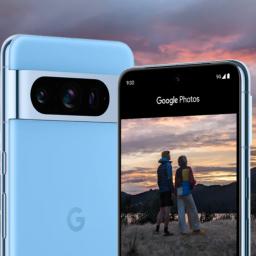 |
by Sarah Fielding on (#6HP1E)
If you're a Google Pixel fan, this week is starting off well for you. A range of Google Pixel phones are currently on sale. For starters, the Google Pixel 8 is back down to its Black Friday price of $549, dropping from $699. The 21 percent discount is the lowest price we've seen the phone at since it launched.The Google Pixel 8 is a great, cheaper alternative to the Google Pixel 8 Pro. We gave it a 90 in our review due to features like a Tensor G3 chip, faster Face Unlock and 20 hours and 16 minutes of battery life. The Google Pixel 8 also has a 50MP main camera and a 12MP ultra-wide camera. Plus, there's the Magic Editor, which combines the capabilities of content-aware fill and lasso. Then there's the new Actua display and an overall more compact design than its predecessor.The Google Pixel 7a is also available at a solid discount, with a 20 percent off sale dropping its price to $399 from $499. This is only $25 more than its all-time low price, so it's a good option. The Google Pixel 7a also earned a 90 in our review thanks to its ability to deliver a quality phone for much less money than the flagship option. It offers a 90Hz display, Tensor G2 chip and wireless charging. The phone also has a high-res 64MP main camera in the back and a 13MP selfie camera with 4K video recording. In our video running test, the battery lasted 17 hours and 41 minutes. Some of our quips were that the speakers sounded a bit shallow and it didn't have a dedicated zoom lens.You can pick up a new smartwatch while you're at it, with the Google Pixel Watch 2 with Wi-Fi on sale alongside the phones. It's down to an Amazon all-time low of $300, dropping from $350 - a 14 percent discount. The Google Pixel Watch 2 has sensors for stress management, heart rate and skin temperature. It also has an always-on display and a 24-hour battery that fully charges in an hour and 15 minutes. The screen is 41mm and features all the Google apps like Calendar and Maps.Follow @EngadgetDeals on Twitter and subscribe to the Engadget Deals newsletter for the latest tech deals and buying advice.This article originally appeared on Engadget at https://www.engadget.com/google-pixel-phones-and-smartwatches-are-up-to-21-percent-off-120544932.html?src=rss
|
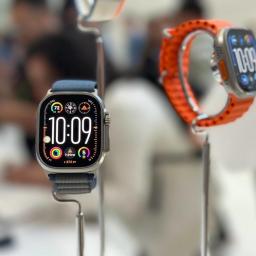 |
by Steve Dent on (#6HNYS)
The Apple Watch Ultra 2 was recently banned from sale due to a patent dispute, but has now returned to the market pending an appeal by Apple. Now that you can buy one again, it's available with a solid discount from Amazon, priced at just $709 (with the Olive Alpine Loop strap) instead of $799 thanks to a $40 coupon and six percent discount - near it's all-time-low price.The Apple Watch Ultra 2 arrived this fall with the new S9 SiP (system in package) chip, allowing you to double tap your thumb and forefinger together to perform activities like ending calls and playing music. The Ultra 2 also automatically turns on Night Mode, processes Siri requests right on the watch and has an always-on display. The form factor matches the OG Ultra smartwatch, but the display is now extra bright, at 3,000 nits vs 2,000 nits from last year's release.The watch has fantastic battery life, which comes in handy when you're trekking through the wilderness, with up to 36 hours per charge. However, there's also a low-power mode that brings this number up to 72 hours. The depth-tracker works even better for divers, adding the ability to save past dives and track depth history straight from the watch.The Ultra 2 adds new widgets, an upgraded compass app, new workout-tracking features and much more. Apple also noted that it was manufactured using 95 percent recycled materials as part of a broader push to lessen the environmental impact of its product line. There's one caveat, though: This deal is only available on the Ultra 2 small model, which fits wrists of 130mm to 160mm, and the Olive Alpine Loop.Follow @EngadgetDeals on Twitter and subscribe to the Engadget Deals newsletter for the latest tech deals and buying advice.This article originally appeared on Engadget at https://www.engadget.com/the-apple-watch-ultra-2-is-just-709-right-now-105032595.html?src=rss
|
 |
by Sarah Fielding on (#6HNYT)
The 2024 Golden Globes represented a return to normalcy after a year dominated by strikes in the entertainment industry. Streamers continued to get recognition for their shows, with Netflix, Hulu and Max picking up a combined 12 television awards.Max (formerly HBO Max) won the most awards, garnering four for the final season of Succession, including best drama television series. Best performance by an actress and actor in that category went to Sarah Snook and Kieran Culkin, who played siblings Roman and Shiv Roy on the series. Matthew Macfayden rounded out Succession's wins by taking home the award for best performance by an actor in a supporting role on television. Succession is available to stream through Max but was viewable direct on TV through HBO.Netflix won for a range of shows, such as The Crown, which premiered its final season at the end of the year. The Crown actress Elizabeth Debecki took home the award for best performance by an actress in a supporting role on television for her portrayal of Princess Diana. Ricky Gervais won best performance in standup comedy on television for Ricky Gervais: Armageddon. Beef took home three awards, winning for best performances by an actress (Ali Wong) and actor (Steven Yeun) in a limited series, anthology series or series made for television. It also won for best overall in that category. The show was mired in controversy due to the casting of (and silence around) actor David Choe, who previously shared stories describing alleged sexual assaults.Hulu's three awards came courtesy of FX-produced The Bear, which won for best musical or comedy television series. The show's lead actors, Ayo Edebiri and Jeremy Allen White, took home the best performance in a musical or comedy television series by an actress and actor awards, respectively.This article originally appeared on Engadget at https://www.engadget.com/netflix-and-hulu-pick-up-tv-golden-globes-as-succession-dominates-102514804.html?src=rss
|
 |
by Steve Dent on (#6HNX5)
Belkin has launched a new wireless charging dock that can perform a neat trick: it can swivel and tilt to track you while you move around a room. The Auto-Tracking Stand Pro does that by being the first device to exploit Apple's DockKit framework that allows it to connect directly to an iPhone without the need for a third-party app, according to the company.The Stand Pro uses motorization to swivel 360 degrees around its base, while tilting up to 90 degrees on the MagSafe arm. Once you attach an iPhone 12 or newer, it pairs to the base via NFC and works with any camera app including FaceTime, Instagram and Microsoft Teams. Then, when you're on a conference call or doing social media, it'll automatically move the phone around to keep you in frame - much like DJI's Osmo Pocket 3.BelkinOh, and it's also a charger, supporting up to 15 watts wireless fast charging when plugged into the wall (it can also run on battery power for about five hours use). It's easy to disable tracking via a button so that it doesn't follow you around like a lunatic when you just want to charge, and an LED shows whether tracking is currently active.The $175 Stand Pro isn't the first motorized tracker out there, as my colleague Richard Lai pointed out, and it certainly isn't the cheapest. However, Belkin claims it's the first to integrate Apple's DockKit developer SDK, so we may see similar products in the future. The product is now on Belkin's store, but there's no word yet on availability.BelkinBelkin also launched a number of other chargers at CES 2024. One that's bound to be popular is the $150 BoostCharge Pro 3-in-1 Magnetic Stand (now in stock) upgraded with the latest Qi2 charging standard. As with the previous version, it lets you charge your iPhone, Watch Series 7 or later and wireless earbuds at the same time. The company also announced the new Qi2-powered BoostCharge Pro Magnetic Power Bank starting at $40 for the 2,500 mAh version.This article originally appeared on Engadget at https://www.engadget.com/belkins-stand-pro-iphone-dock-uses-apples-dockkit-to-track-you-around-a-room-095605017.html?src=rss
|
 |
by Richard Lai on (#6HNX6)
There was a time when smartphone makers rushed to quad-camera claims, most of which did so by throwing in a mediocre fourth camera - usually for macro shots, if not a monochrome filter or just a depth sensor. Nowadays, though, we are blessed with legit quad "main" cameras on some flagship phones, so brands need to be more creative to further differentiate themselves. In Oppo's case, it decided to feature not just one, but two periscope telephoto cameras on its new Snapdragon 8 Gen 3-powered Find X7 Ultra, as a leap from the triple camera system on the previous model.The Find X7 Ultra's "HyperTone Camera System" features the same 50-megapixel resolution across all four rear Hasselblad cameras, thanks to their relatively large sensors compared to the competition, according to Oppo. The main imager packs Sony's second-gen 1-inch sensor, the LYT-900, which is more efficient in terms of power consumption and thermal performance. This is complemented by an f/1.8 aperture, OIS (optical image stabilization), a 23mm focal length and a 50-percent reduction in lens reflection. The ultra-wide camera features a 1/1.95-inch Sony LYT-600 sensor with an f/2.0 aperture, making this one of the fastest shooters in its class. This comes with a 14mm equivalent focal length and a focus distance down to 4cm.Then we're left with the two periscope telephoto cameras. The first one, a 3x optical zoom, has a 1/1.56-inch Sony IMX980 sensor - "roughly three times larger than" the competition, apparently. You also get an f/2.6 aperture, along with "Prism OIS," a 65mm focal length and a 25cm focus distance - handy for portraits and product shots. Then we have a 6x optical zoom periscope, which is powered by a 1/2.51-inch Sony IMX858 sensor and has an f/4.3 aperture, 135mm focal length, a 35cm focus distance plus Prism OIS. With AI-enhanced zoom at 12x, Oppo says its Find X7 Ultra handles a versatile equivalent focal length range of 14mm to 270mm."OppoOppo also claims to have made some major breakthroughs in mobile photography here. Most notably, it's finally rolling out its "HyperTone Image Engine," which supposedly improves computational photography results for HDR, as well as avoiding over-exposure and over-sharpening. This was apparently in development for two years, with input from professional photographers and color experts. It's all about "merging objective quality together with subjective emotional," as a spokesperson stated. Better yet, HyperTone Image Engine will eventually be rolled out to some existing Oppo devices, namely the Find N and Reno series, depending on compatibility.Other areas of improvement include the quality consistency across the zoom range (especially in low-light environment), as well as more realistic portrait shots thanks to the new "Hasselblad Portrait Mode." For the latter, rather than getting fake-looking bokeh and poor edge detection, Oppo boldly promises to deliver "cinematic bokeh with foreground and background depth," with a stunning accuracy down to a single strand of hair, plus minimal shutter lag as a bonus.Oppo is also offering a new "Hasselblad Master Mode" which is based on the characteristics of the Hasselblad X2D 100C medium format mirrorless camera. You get to fiddle with saturation, contrast, sharpness and vignette control to create your preferred style, as well as other shooting features like manual ISO, shutter speed, EV, focus, and white balance. This Master Mode also offers "RAW MAX" capture - pending an OTA update - which supports 13 stops of dynamic range, along with 16-bit color depth in BT2020 color space for each 50-megapixel still.OppoThe Find X7 Ultra comes in three color options: "Ocean Blue," "Sepia Brown" and "Tailored Black", all of which feature a vegan leather cover (and the black version comes with decorative stitches). Despite the extra periscope camera, generous 5,000mah battery and wireless charging support (within 60 minutes using 50W; double that for 100W SuperVOOC wired charging), this device actually shares a similar weight and thickness as the Find X6 Pro. This is thanks to a slimmer wireless charging coil, thinner vegan leather and an improved logic board stack design. Oppo was also able to keep the entire rear camera module tightly packed by using "single-sided magnets," in order to avoid interference between the three OIS parts.This new phone also features Oppo's brightest-ever QHD (3,168 x 1,440) panel, with outdoor brightness maxing out at 1,600 nits, and local peak brightness at 4,500 nits for HDR purposes. This 6.82-inch AMOLED panel supports the usual 120Hz refresh rate and ultra-low touch latency, along with "rain water touch" support for wet hands (it has IP68 dust- and water-resistance rating). While the three-stage slider is here to stay, it's been repurposed to a "VIP slider" for quickly changing notification mode, or cutting off camera, location, and microphone access for an extreme privacy mode.To our surprise, Oppo doesn't currently have plans to launch the Find X7 Ultra outside of China, so you'll have to source one from an importer. For your reference, this model ranges from 5,999 yuan (about $845) with 12GB RAM and 256GB storage, to 6,999 yuan (about $990) with 16GB RAM and 512GB storage. These three options are available for pre-order now, ahead of their January 12th retail launch. There will also be a special edition with satellite call support arriving in late March, but no price was mentioned.OppoFor those on a budget but still want the same fancy look, there's the Find X7 base model powered by a MediaTek Dimensity 9300 processor. It only packs triple cameras on the back: a 50-megapixel main shooter (likely with Sony's 1/1.4-inch LYT-T808 sensor; f/2.0; OIS), a 64-megapixel 3x periscope zoom camera (f/2.6; Prism OIS; 1/2-inch sensor), and a 50-megapixel ultra-wide camera (f/2.0; 119 degrees). It also has a slightly smaller 6.78-inch OLED screen with a lower 2,780 x 1,264 resolution. Unsurprisingly, there's no VIP slider feature on this model.The Find X7 starts from 3,999 yuan (about $560) and offers 12GB RAM with 256GB storage, and maxes out at 4,999 yuan (about $700) for its 16GB RAM plus 1TB storage offering. In addition to the "Ocean Blue" and "Sepia Brown" designs, you may also consider the purple and black options, both of which come in a glass back.This article originally appeared on Engadget at https://www.engadget.com/the-oppo-find-x7-ultra-is-the-first-phone-with-two-periscope-zoom-cameras-085332818.html?src=rss
|
 |
by Steve Dent on (#6HNX7)
French telescope company Unistellar has launched two new tech-infused models at CES 2024 promising to eliminate the tedious parts of backyard astronomy. The new Odyssey and Odyssey Pro smart telescopes use new technology to focus on both nearby objects like Jupiter and distant stars or nebulae. They also feature new Nikon optics and an updated smartphone app that helps you align and focus the telescope, while automatically finding targets to image.Unistellar's current smart telescopes, the eVscope 2 and eQuinox 2, are primarily designed to image distant galaxies, stars, clusters and the like - they can also image planets, but focus can be tricky. However, the Odyssey and Odyssey Pro use what the company calls Multi-Depth technology to focus equally well on both near and far objects, letting you switch instantly from viewing the Moon to a distant nebula.EngadgetIt works by using the full sensor resolution to image close-in objects, which are bright but relatively small. For dim, larger objects it combines four pixels into one, much like many smartphone cameras, to boost the light gathering capability, at the cost of some detail. As the company told us at CES, it also "stacks multiple images of the same spot to render a clean output."They even work in light-polluted areas, thanks to a high-sensitivity sensor and smart image processing. "With the Odyssey, Unistellar is offering a new generation of smart telescopes that are both ultra-powerful and capable of instantly transforming your stargazing evenings into adventures across the cosmos with family or friends, even in the middle of the city," said Laurent Marfisi, Unistellar co-founder and CEO.The other big update is the Android/iOS app. As before, it automatically points the telescope toward the desired target at the right time, by recognizing groups of stars and calculating exactly where a target should be. However, it can now suggest items to look at on a particular evening, and provide extra context about the body in question.UnistellarBoth telescopes have new optical tubes using Nikon optics and the company says they're the first that don't need manual adjustments - something that can be difficult for amateur astronomers. That marries with a new autofocus system - much like what you'd see on a digital camera - to deliver consistently sharp images.The new telescopes are cheaper than past models, though they do have smaller mirrors than the eVscope 2, at 320mm compared to 450mm focal length. The main difference between the two models is that the Odyssey Pro has slightly more resolution (4.1 megapixels compared to 3.4 megapixels), along with a Nikon-made eyepiece. The Odyssey is now shipping for $2,499, while the Odyssey Pro costs $3,999. The company also has a special edition Odyssey Pro Red Edition (above), that costs $4,499.Engadget's Richard Lai contributed to this report.We're reporting live from CES 2024 in Las Vegas from January 6-12. Keep up with all the latest news from the show here.This article originally appeared on Engadget at https://www.engadget.com/unistellars-latest-smart-telescopes-take-the-hassle-out-of-backyard-astronomy-084239993.html?src=rss
|
 |
by Billy Steele on (#6HNVM)
LG typically shows off a host of new TVs at CES each year, but they're usually the more traditional flat screens. This year in Las Vegas, the company is debuting something quite different in addition to M- and G-series updates. The OLED T is what the company calls the first wireless transparent OLED TV, with 4K resolution and LG's wireless transmission tech for audio and video. The unit also features a contrast screen that rolls down into a box at its base that you can raise or lower with the press of a bottom.The OLED T is powered by LG's new Alpha 11 AI processor with four times the performance of the previous-gen chip. The extra power offers 70 percent greater graphics performance and 30 percent faster processing speeds, according to the company. The OLED T model works with the company's Zero Connect Box that debuted on last year's M3 OLED that sends video and audio wirelessly to the TV. You connect all of your streaming devices and game consoles to that box rather than the television.The OLED T's base houses down-firing speakers, which sound surprisingly good, as well as some other components. There are backlights as well, but you can turn those on for a fully-transparent look. LG says the TV will come in standalone, against-the-wall and wall-mounted options.Photo by Billy Steele/EngadgetAt first, some of the visuals on the OLED T are a bit unsettling. A singer on the transparent display appeared to be actually in the room - in miniature form, of course. Things like a fish tank were a bit more pleasant to look at and movie clips were crisp and vivid. LG also put what it calls the T-Bar on the OLED T, adding chyron-like mix of news, weather, song titles and more along the bottom while the rest of the screen stays clear.Samsung also announced a transparent TV at CES 2024, but that version is Micro OLED. It too looks bright and sharp, but there's also no word on when it could be available or what it'll cost. LG isn't talking pricing either, but the company did say it plans to sell the OLED TV in 2024.We're reporting live from CES 2024 in Las Vegas from January 6-12. Keep up with all the latest news from the show here.This article originally appeared on Engadget at https://www.engadget.com/lg-brought-the-worlds-first-wireless-transparent-oled-tv-to-ces-2024-071151174.html?src=rss
|
 |
by Sam Rutherford on (#6HNRS)
There's always a number of surprises at CES and during its First Look event, Samsung teased the world's first transparent MicroLED display.While there's still no word on how much it costs or when this tech will find its way into retail devices, Samsung showcased not one but three different transparent micro LED displays with slightly different designs. Two of the demo units featured tinted glass which made it easier to ignore any potential districting objects behind the panels, while another appeared to be as transparent as regular glass while also boasting a frameless design.Photo by Sam Rutherford/EngadgetIn person, the effect Samsung's transparent micro OLED displays have is hard to describe, as content almost looks like a hologram as it floats in mid-air. All of the demo units were freestanding and measured only about a centimeter thick, which adds even more to the illusion of a floating screen. Additionally, because of micro LEDs high pixel density, images also looked incredibly sharp. So far Samsung has only uploaded a single vertical video overflowing with EDM, but hopefully it gives you some idea what we saw:According to a Samsung representative, because transparent MicroLED displays have higher brightness compared to transparent OLED panels, they are also less impacted by ambient light.The bad news is that with Samsung's current crop of non-transparent MicroLED TVs currently costing $150,000 for a 110-inch model, it's going to be a decently long time until these new displays become anything close to affordable.We're reporting live from CES 2024 in Las Vegas from January 6-12. Keep up with all the latest news from the show here.This article originally appeared on Engadget at https://www.engadget.com/samsung-debuts-the-worlds-first-transparent-microled-screen-at-ces-2024-042634398.html?src=rss
|
 |
by Nathan Ingraham on (#6HNRT)
Finding weird pet-related technology is a CES tradition, and this year is no exception. Take Flappie, for example. The Swiss start-up is showing off an AI-powered cat door that automatically locks if your kitty tries to bring in prey it caught from the outside.On the side of the door facing the outside, you'll find a motion sensor and night-vision camera. Flappie says it has compiled a "unique and proprietary" dataset over the years, with a focus on diversity - this means getting lots of different kinds of cats as well as prey, filmed in a variety of different lighting conditions. The company says that its AI-powered detection system is accurate more than 90 percent of the time, which means your cat could still get a mouse inside. But hopefully that'll happen a lot less frequently.There are some manual switches on the inside of the door so you can lock and unlock it any time you want as well as turn off the prey-detection system. Eventually, Flappie says that pets are likely to be trained that they can't enter when carrying something, and when they drop the prey the door will promptly unlock so they can get inside. (One of Flappie's co-founders admitted that a smart cat might figure out to drop the mouse, get the door open, pick it back up and then run in. But no solution is foolproof, right?)Photo by Nathan Ingraham / EngadgetFlappie also included chip detection in its cat door. So if your pet has been microchipped, you can make it so the cat door only opens for your specific pet. And, of course, there's an app so you can control the door from your phone. But if you're not inclined to hook the Flappie door up to the internet, it'll still work via the controls on the door itself.For starters, Flappie plans to launch its pet door in Switzerland, Zurich and Germany later this spring, with plans to expand from there once it gets production scaled up. A US launch is part of the roadmap, but there's no word yet on when that'll happen, or how much the Flappie door might cost when it gets here.We're reporting live from CES 2024 in Las Vegas from January 6-12. Keep up with all the latest news from the show here.This article originally appeared on Engadget at https://www.engadget.com/the-flappie-ai-cat-door-stops-your-pet-from-gifting-you-dead-mice-033237654.html?src=rss
|
 |
by Daniel Cooper on (#6HNQD)
It was at CES 2024, in a Las Vegas ballroom with a carpet so static I was getting an electric shock every few minutes, that I finally saw one of my longest-held dreams come true. You see, I own a Concept2 Model D rowing machine, hands down the best rowing machine on the market. But the company has always refused to build a display that doesn't look like it comes from the early 80s. When the PM5 was launched, it looked dated, but in a world where Hydrow and Peloton can offer gorgeous touchscreen displays and live classes, it looked ancient. Which is why I'm so elated that I stumbled across Myrow and its 22-inch retrofit display for Concept2's rowing machines.The tablet attaches onto Concept2's existing monitor stand by unscrewing a couple of bolts without damaging the existing hardware. You'll still need the PM5, since Myrow connects to that to pull your rowing data, but it can sit flat in its storage position beside the fan. Then, you'll be able to access on-demand rowing classes, custom workouts and, because everyone who has seen the product has asked, streaming video. This is more or less why I've tried any number of annoying third-party mounts to put some sort of video solution onto my rower. After all, the best motivator (for me) is to turn movie-watching time into a workout.As well as the video classes, you'll get better visualisation of your rowing data which is another frustrating experience with the PM5. You'll even be able to share your data to Logbook automatically which, normally, can be frustrating experience.Myrow is the brainchild of Gary Simpson, the founder of Transit Wireless which brings wireless signal to subway systems. He said he was opting wether to ride on his Peloton or row on his Concept2 during the period everyone was sheltering in place. And that the lack of live classes, or any added-value features, meant he defaulted to the bike far more than he liked. So, he decided to look and see if there were any available products out there and, when he didn't find any, opted to build his own.Myrow hopes to open pre-orders at some point in February with shipping expected to begin in April. It'll cost $499 for the tablet and mount, with an additional $30 a month subscription to get the on-demand classes and everything else.We're reporting live from CES 2024 in Las Vegas from January 6-12. Keep up with all the latest news from the show here.This article originally appeared on Engadget at https://www.engadget.com/someone-made-a-peloton-esque-display-for-the-worlds-most-ubiquitous-rowing-machine-031001362.html?src=rss
|
 |
by Mat Smith on (#6HNQE)
At CES 2024, Govee not only revealed an upgraded AI Sync Box Kit, Neon Rope Light 2 and, because it's 2024, there's even a dedicated chatbot. While it wasn't available for testing at CES Unveiled, the media preview event that takes place two days before the CES show floor opens, Govee's AI Lighting Bot will eventually be bundled into the company's smartphone app, where you'll apparently be able to cajole it into generating using natural language inputs, a la ChatGPT.As you can see in Govee's concept video, it'll apparently source lighting designs and transmit them to your Govee lights, whether they're lighting spots, strips or anything else. In one example in Govee's video, a user asked for a Barbie Dreamhouse-inspired lighting effect" for their outdoor lights and spotlights, which then undulated between various shades of hot, powder and another-kind-of pink.Of course, you'll need even more lighting strips to accomplish grander smart lighting visions, and Govee is willing to oblige with its second-generation Neon Rope Light 2. A spokesperson explained that it will now offer smoother lighting transitions and upgraded bend clips and is made of an even more flexible material, which should be easier to shape around furniture, corners and even into shapes.EngadgetYou'll also be able to customize the lighting effects of the Neon Rope more easily too. Govee's app can apply lighting effects through different segments using your smartphone camera and shape recognition, hopefully better evoking your smart lighting vision. The Neon Rope Light 2 will also be Matter-compatible when it launches in the first half of 2024.Finally, the AI Sync Box Kit 2 will be HDMI 2.1 compatible and following feedback from its users on Govee's first kit, will support resolutions up to 8K and output video (with matching light effects) at 4K at 120Hz. Govee says its new CogniGlow AI recognition tech will automatically activate tailored lighting effects for compatible games. One example is a blue healing bloom' when a character heals in Apex Legends. You'll even be able to personalize these AI effects if you want more subtle lighting twists. A Matter-compatible update will also land on the sync box later this year.We're reporting live from CES 2024 in Las Vegas from January 6-12. Keep up with all the latest news from the show here.This article originally appeared on Engadget at https://www.engadget.com/govees-ai-chatbot-programs-your-smart-lights-for-you-030217383.html?src=rss
|
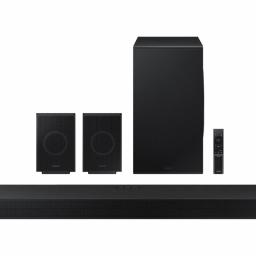 |
by Billy Steele on (#6HNQF)
When I reviewed Samsung's HW-Q990C last year, my main gripe with the flagship soundbar was the fact that it didn't offer HDMI 2.1. That meant that it didn't have the 4K/120 passthrough for things like gaming consoles and streaming devices the competition did. At CES 2024, the company is addressing that concern. With the HW-Q990D (note the one letter difference), HDMI 2.1 is onboard even though the overall design hasn't changed. Samsung's priciest soundbar once again supports wireless Dolby Atmos with an 11.1.4-channel sonic setup, making it the most robust option in the company's 2024 home theater lineup.Samsung packed in several new features for the Q990D. First, a Private Listening mode turns off all front-firing drivers and only uses the rear speakers so as not to disturb sleeping family or roommates. A new Party Play mode creates a balanced sound across the soundbar and rear speakers so that each element of the setup offers a solid mix. You won't just get the rear channels from those speakers at the back of the room, in other words. Other 2024 Q-Series soundbars will get these two new modes, including the Q910D, Q800D and Q730D. Plus, the entire Q-Series still works with Alexa and Google Assistant, in addition to Bixby, and support for Chromecast and AirPlay returns across the board.When connected to a compatible Samsung TV, the Q990D's sound can be analyzed by the display's NPU processor to smooth out sharp notes and bass tons for the ideal results. Q-Symphony is back as well, adding the speakers from a Samsung TV to the Q990D and some of the company's other soundbars to provide a more robust living room audio setup. The Q990D also supports Roon, a high-resolution music streaming service that allows you to beam music, including local files, to individual speakers or groups of devices.In addition to the Q-Series, Samsung has also updated its ultra-slim S-Series lineup. The key addition is a new 35-inch-wide S700D model that's designed to fit better with TVs sized 55 inches and smaller. The company promises the same "impressive sound quality" as the 46-inch S800D and S810D, which are also updated for 2024. All of these ultra-slim soundbars are meant to be used with low-profile displays, like The Frame, or in cases where customers don't want the imposing stature of something like the Q990D. More specifically, they're about a third of the depth of a typical soundbar. The S models still offer wireless Dolby Atmos, Q-Symphony, SpaceFit Sound Pro and other premium features, but they top out at 3.1.2-channel setups. What's more, the S800D now has HDMI eARC if you still prefer a wired option.Once again, there's no word on pricing or availability for the Q990D, or any of the other new models, just yet. But for reference, last year's Q990C arrived in the spring and was originally priced at $1,900. It included two wireless rear speakers and a wireless subwoofer. The top-of-the-line ultra-slim model, the S800B, was $900 at launch and included a wireless subwoofer. We're likely to get pricing info from Samsung closer to the shipping date for all of the 2024 items.We're reporting live from CES 2024 in Las Vegas from January 6-12. Keep up with all the latest news from the show here.This article originally appeared on Engadget at https://www.engadget.com/samsungs-q990d-soundbar-has-the-one-thing-the-2023-version-didnt-hdmi-21-030059753.html?src=rss
|
 |
by Will Shanklin on (#6HNQG)
Samsung's CES 2024 TV rollout is here. The company typically reserves finer product details (including pricing) for later, but it provided Engadget with a quick rundown of its new television lineup ahead of its press conference on Monday. Its new 8K TVs have new AI-powered features, including upscaling technology (to help with the scarcity of native 8K content), and it claims a glare-free" OLED model looks equally clear in bright and dark rooms.Samsung's new quantum dot TVs have AI-powered upscaling tech the company hopes will nudge curious consumers into paying a premium for an 8K TV. With most content providers currently lacking native 8K streaming options, Samsung's AI Upscaling Pro feature in its QN900D (65- to 85-inch) television can help by converting 4K content into 8K or HD / SD media into 4K.The company says the QN900D is the slimmest, most premium 8K TV to ever hit the market." In addition to resolution upscaling, the television includes a trick to recognize when you're watching sports and help track the game's ball on the screen. Another algorithmic feature, Real Depth Enhancer Pro, helps boost contrast between the foreground and background, including in fast-paced content like car racing.Samsung's new QLED (8K and 4K) and OLED televisions also include Active Voice Amplifier Pro, a more advanced version of an existing feature that can boost dialog and key sound effects" for more immersive audio. In addition, AI Customization Mode asks you to choose your preferred picture" in a series of scenes when setting up the television; it will then use AI to detect the scene you're watching and optimize the picture accordingly based on your preferences.The company is also launching a (presumably cheaper) 8K QLED TV, the QN85D, that lacks the fancy AI conversion features. Meanwhile, the company's 4K NEO QLED lineup includes the QN90D (43- to 98-inch) and QN85D (55- to 85-inch).SamsungSamsung also has new OLED models for 2024, including the S90D and S95D (both 55- to 77-inch). The latter includes the company's OLED Glare Free" tech, which it claims will let you enjoy the best possible viewing experience across both bright and dark rooms." Samsung says the feature doesn't affect the picture's viewing angles or contrast and can depict Pantone-validated standard colors. The S95D has a 4K 144Hz panel, and it measures just under 11mm thick.The company's 2024 offerings also include more ultra-large screen options than ever," including 98-inch models in its Neo QLED 8K and 4K, QLED 4K and Crystal UHD lineups. Yet another AI-powered feature will address the problem of pixels becoming more discernible as screen size increases. Samsung's Supersize Picture Enhancer feature uses AI upscaling to enhance the perceived sharpness and reduce visible noise on each pixel to help offset the bigger TVs' larger dots.Engadget is on the floor at CES 2024 and will check out the hardware and software-based features in Samsung's new televisions. You can also tune into the company's press conference on Monday at 5PM ET.We're reporting live from CES 2024 in Las Vegas from January 6-12. Keep up with all the latest news from the show here.This article originally appeared on Engadget at https://www.engadget.com/samsungs-2024-tv-lineup-at-ces-2024-includes-ai-aplenty-and-a-glare-free-oled-model-030046720.html?src=rss
|
 |
by Billy Steele on (#6HNQH)
Samsung's The Frame TV has become a key part of its home entertainment lineup since the product debuted in 2017. The company has upgraded it a few times over the years, but at CES 2024 in Las Vegas, Samsung revealed a new audio accessory to accompany the TV that doubles as a showcase for art and photos. The company calls it Music Frame (HW-LS60D): a wireless speaker that once pulls double duty as home decor, much like its television counterpart. This unit doesn't have a screen, though, instead it holds printed photos or art that you'll need to swap out manually. However, the basic idea is the same: a piece of home theater gear with the appearance of a picture frame.Inside are two woofers, two tweeters and two mid-range drivers. The speaker array is capable of Dolby Atmos audio and it leverages Samsung's SpaceFit tech to calibrate the sound to the room. The company says the Music Frame has a "wide radial sound range" so that it can deliver quality audio wherever you're sitting around it. The two woofers are rear firing while the other four drivers are front firing, a setup the company explains contributes to the speaker's clear, natural sound. Music Frame is compatible with Samsung's Q-Symphony technology that uses TV speakers along with any additional home theater audio gear to boost overall sound quality.Photo by Billy Steele/EngadgetThe Music Frame can be used as a standalone Bluetooth or Wi-Fi speaker or as part of a home theater setup alongside a Samsung TV or soundbar. You can also install two of them on either side of a Frame TV for as a stereo pair or employ the Music Frame as rear speakers or even as a subwoofer. The device is ready to be wall mounted and it has a built-in stand if you'd rather set it on a table. Samsung also packed a full IoT hub into the Music Frame and made the speaker voice-enabled so you can employ your go-to virtual assistant to control music and more.I actually got to hear the Music Frame at Samsung's CES first look event. I was shocked by how robust and clear the overall sound quality is coming from the speaker. Highs and mids are adequately represented with great detail, while the bass is more restrained. That could be a product of a noisy demo area, so I'll reserve final judgement on the low-end tone until a full review. I also only heard selected music tracks played on the unit as the company didn't have a home theater setup along with a Frame TV to show off the Dolby Atmos abilities.No word on pricing or availability for the Music Frame just yet, but that's usually the case for Samsung's CES product announcements. Those key bits of info typically come closer to the devices shipping, which is almost always after their January unveiling.We're reporting live from CES 2024 in Las Vegas from January 6-12. Keep up with all the latest news from the show here.This article originally appeared on Engadget at https://www.engadget.com/samsung-debuts-music-frame-speaker-to-pair-with-your-frame-tv-at-ces-2024-030024733.html?src=rss
|
 |
by Lawrence Bonk on (#6HNQJ)
Samsung always has a major presence at CES 2024 in Las Vegas, and this year is no exception. The company just unveiled an update to its existing line of smart monitors. This is a modest refresh of last year's Smart Monitor M8, which was already feature-packed. This one looks to keep many of the same specs from 2023's release, from resolution to the detachable camera. However, there have been some software updates.The Smart Monitor M80D boasts a 32-inch 4K panel and all kinds of high-tech bells and whistles. The big news here is that you can use the display without a PC or a gaming console.This doesn't mean it's a full-fledged computer on its own. The standalone tasks include video calls via the detachable webcam and streaming content from providers like Netflix and Prime Video. The monitor also includes Samsung's Gaming Hub, so you can stream all kinds of titles via the cloud. Finally, there are standalone apps for controlling smart home devices, word processing and one for accessing fitness metrics.The previous-generation M8 Smart Monitor already boasted some features that worked without the use of a PC, but this new version kicks things up a notch. You also get HDR10+ visuals, built-in 2-channel speakers and Bluetooth for connecting directly to other gadgets, like wearables. There's even a tool that lets you quickly send images and text from other Samsung devices, like Galaxy smartphones and Book laptops, to the monitor. It also integrates with Galaxy Buds to offer a surround sound-like experience" with minimal latency.This model will be available sometime this year, but Samsung hasn't released pricing details. As a comparison, the previous-generation launched at $700, but was commonly available with steep discounts.Samsung also used CES to announce something truly odd, a 3D monitor in the year 2024. 3D technology was extremely popular more than a decade ago, but has since fallen out of favor due to limited use case scenarios. This display offers a potential new use for 3D tech, access to VR content without a headset.Samsung promises the monitor can run most VR applications without any wearable accessories whatsoever, though the experience will be markedly different. There's eye and head-tracking integrated into the display, so it can mimic VR movement, but the field of view will be limited by the monitor. A built-in algorithm automatically adjusts the 3D response to provide the most immersive gaming experience" and it works with all Steam VR titles. Of course, you can also use it to watch traditional 3D content, like 2009's Avatar or whatever.There's no release date yet, though Samsung says it'll release more information about the monitor as the year progresses. The company also announced a monitor called The Link that's intended for multi-screen setups. There isn't much information available for this one, with more to come later in 2024."This article originally appeared on Engadget at https://www.engadget.com/samsung-updates-its-smart-monitor-that-works-without-a-pc-for-ces-2024-030013578.html?src=rss
|
 |
by Billy Steele on (#6HNQK)
To go along with its new TVs and soundbars in Las Vegas, Samsung also announced new projectors to fill out its home theater lineup. At CES 2024, the company has four new Premiere models to choose from, and while the Premiere 8K and Premiere 5 are the two most interesting, the entire lineup for this year is getting a feature called Lightwarp that turns any object or surface into an interactive display.Samsung says this is the first time that projection mapping has been available outside of a professional environment and in consumer-grade devices. The tool allows you to project any content on any surface, including a customizable dashboard full of widgets for a clock, weather and more. The company says you'll be able to tap on the projection to interact with it, citing examples like writing on sticky notes or playing a tabletop game. There aren't too many details available yet, but we should get more info, and hopefully a demo, at CES now that the projectors have been announced.The entire 2024 Samsung projector lineup will also get the company's Gaming Hub. This will let you access thousands of games without a console. All four can be used as smart speakers without having to turn the screen projection.Samsung calls the new Premiere 5 a "do-it-all" model. The company describes it as "the world's most compact triple-laser ultra-short-throw projector, ticking the tape at 7.9 inches high, 5.4 inches wide and 5.4 inches deep. It also weighs just 3.7 pounds, so it can easily be repositioned around your living space. The smaller stature should come in handy when moving it around to make use to Lightwarp and an included stand helps you beam visuals on tables and desks.When placed 17 inches from a wall, Samsung says the Premiere 5 can display up to a 100-inch image, automatically adjusting for focus and color balance. The Premiere 5 features a multi-function key that enables mode switching, mobile connection and a screen off feature. That last item keeps audio on while disabling the visuals, and you can also easily mirror a smartphone display by tapping the device on the projector. The company didn't specify whether this needs to be a Samsung phone, but we'll update this post if and when we find out. There's a built-in 10-watt speaker too, which the company says it capable of "rich, room-filling sound."At the top of the lineup sits the Premiere 8K. This coffee-table-sized unit is the first 8K projector with wireless connectivity for devices you'd typically connect with cables, according to Samsung. A Wireless One Connect Box is where you'll hook up all of your streaming gadgets and consoles, and it then sendscontent to the projector from up to 10 meters (around 33 feet) away.The company says the Premiere 8K is also the first to combine 100-watt output with 8.2.2-channel Dolby Atmos and Sound-on-Screen tech - a feature that makes it seem like audio is coming from the projected image rather than the projector. This unit can muster a 150-inch image at 12 inches away from a wall where Samsung says the competition needs five meters (around 16 feet) to do the same. And if you're worried about a lack of 8K content, the projector can upscale 4K items thanks to onboard AI-powered tech.Last but not least, Samsung says the Premiere 7 and Premiere 9 are the follow-ups to the current Premiere LSP7T and LSP9T options. Both of these short-throw projectors will offer brighter projection and a Quantum 4K processor. Dolby Atmos sound is also onboard for "a theater-like experience," according to the company.Samsung didn't announce any details regarding pricing and availability, but that's typical for CES. That information typically comes closer to launch, and we'll keep you updated as those specifics emerge.We're reporting live from CES 2024 in Las Vegas from January 6-12. Keep up with all the latest news from the show here.This article originally appeared on Engadget at https://www.engadget.com/samsung-debuts-premiere-projectors-that-turn-any-surface-into-an-interactive-display-for-your-home-theater-030006840.html?src=rss
|
 |
by Cherlynn Low on (#6HNQM)
In recent years, LG has rolled into every CES with an update to its Gram series of super thin and light laptops. And each time, I delight in seeing how hard (or easy) it is to squeeze in a quick arm workout on the showfloor with the newest version. This year at CES 2024, the company is launching a pair of Pro models that feature upgraded OLED panels that support touch input and variable refresh rates. They also come with Intel's Meteor Lake processors and up to NVIDIA's RTX 3070 graphics cards.This generation of LG's Gram Pros come in 16- and 17-inch models, with OLED and IPS display options to choose from. The company also upgraded its stylus so it recharges when magnetically attached to the laptops. The stylus available at the showfloor was not working, so I wasn't able to see if its slimmer body affected the writing experience at all. Plus, the sample model of the Gram Pro 2-in-1 also stuttered every now and then when changing the screen's orientation as I flipped it between landscape and portrait modes.Cherlynn Low for EngadgetI'm willing to chalk that up to the units running pre-production software, which is also why I didn't get to check out the software features that LG is rolling out with these laptops, either. For one thing, the Gram Pros' processors are equipped with Intel's AI Boost, which is supposed to help the machines perform AI tasks more quickly. LG is also offering its Link software that can let you use Windows, Android and even iOS devices as companion secondary displays to the Grams. Neither of these features were shown off at the CES 2024 demo area, though.What I did get to check out in person is the build, which an LG representative told me is more durable than before. It uses a nano-magnesium alloy, and impressively houses a dual-fan cooling system. For a system that contains that hardware, and includes two USB-A, two USB-C and an HDMI port (along with a headphone jack), the 17-inch Gram Pro that I picked up was surprisingly sleek. It has a contoured edge that is thicker at the port end and tapers off to a strikingly sharp end.Photo by Cherlynn Low / EngadgetThe 2-in-1, which only comes in a 16-inch size, has won a Guinness World Record for "lightest 16-inch 2-in-1 laptop." It weighs 3 pounds, which made it not at all challenging for the bicep curls and shoulder presses I was doing with it. But that also means it won't add too much to your load when you're on the go.We've had concerns with the Gram laptops' build quality in the past, as they've been so thin that their chasses have exhibited flex. This year's model is similarly sleek, with a profile measuring 12.4mm, and it has a nano-magnesium frame like the non-2-in-1 version. The unit I checked out certainly felt a little stronger than those I've seen in previous years, but I can't give you specifics since I wasn't trying hard to break it.You can choose between OLED or IPS panels, with the former offering a variable refresh rate between 48 and 120Hz and the latter stretching that range to 31Hz and 140Hz. The Gram Pro series will be available in February and start at $1,499. For more details on what's new with the 2024 Gram Pro laptops, check out our news post here.We're reporting live from CES 2024 in Las Vegas from January 6-12. Keep up with all the latest news from the show here.This article originally appeared on Engadget at https://www.engadget.com/lg-gram-pro-2-in-1-hands-on-a-lightweight-convertible-gets-a-better-faster-oled-screen-025942736.html?src=rss
|
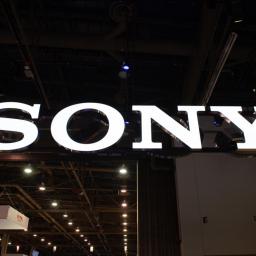 |
by Lawrence Bonk on (#6HNP2)
The annual Consumer Technology Association (CES) trade show is nearly upon us, having already turned Las Vegas into a high-tech wonderland. Sony's holding a press conference the day before CES 2024 exhibitions open, on January 8 at 8PM EST. You can stream it live via Sony Square or on the company's YouTube channel.What we expectSony is being particularly cagey about what it has in store, saying it will showcase various technologies and initiatives that support creators." An official company press release also says Sony's purpose here is to fill the world with emotion, through the power of creativity and technology."There was a holding image on Sony's website that seemed to indicate that the presser would focus on technology involving movie production, professional sound and VR. Those three together could certainly, uh, fill the world with emotion. The original teaser image showed the Ghostbusters logo, a man singing into a microphone and a film crew. However, Sony replaced this image with a simple visual showing a bunch of nondescript circles.While we don't know what Sony will focus on, we have some ideas of what the company is likely to avoid. Last year, Sony didn't mention TVs at all, saving that for an event in March. It's possible we'll get something PlayStation related, but with the recent launch of the PS5 Slim and the befuddling PlayStation Portal, don't hold your breath.We could, however, get some game announcements for the PSVR2. Sony revealed a VR Gran Turismo 7 update at last year's press conference. It's also possible that Sony will announce some home theater products to go along with that whole creativity and technology" thing.Sony likes to use CES to reveal experimental tech that may or may ever see an actual release. Last year we got the Afeela EV concept vehicle, a partnership with Honda, so who knows what wacky tech will take center stage this year. Sony also revealed a truly innovative kit for PS5 controllers to help players with disabilities during 2023's event.We're reporting live from CES 2024 in Las Vegas from January 6-12. Keep up with all the latest news from the show here.This article originally appeared on Engadget at https://www.engadget.com/how-to-watch-sonys-ces-2024-press-conference-220051103.html?src=rss
|
 |
by Daniel Cooper on (#6HNP3)
Withings has a knack for turning up at CES with a gizmo that garners plenty of attention in the health-tech space. This year, at CES 2024, it's showing off something called the BeamO, an all-in-one diagnostic tool that follows in the footsteps of its existing contact-free thermometer. Dubbed a multiscope," the $250 device will tell you how warm (or not) you're feeling, measure your blood oxygenation, run a one-lead ECG and even act as a digital stethoscope. Put this to your chest and you can listen to the sounds your chest is making, or send the file to your physician for further analysis.As much as Withings markets its products to the worried well, the company says this may have some real impact in the telemedicine space. After all, these sorts of basic tests are the ones you'll experience most of the times you visit a doctor, but aren't that easy to do online. (Especially given the dangers of self-reporting, the ability for a professional to hear what's going on in the chest cavity seems key.) The company adds that, pending the usual long delay with the FDA, BeamO will also be able to detect atrial fibrillation.Once it has won its numerous approvals, it'll be interesting to see if BeamO - silly name aside - will be seen as valuable by telehealth professionals. Certainly, paired with its class-leading Health Mate app, it'll offer users an easy way to look at all of this data. We'll just have to see if this helps doctors feel the same way, or if they'll roll their eyes and stick to what they know. We'll find out more when the device begins shipping in June.We're reporting live from CES 2024 in Las Vegas from January 6-12. Keep up with all the latest news from the show here.This article originally appeared on Engadget at https://www.engadget.com/the-withings-beamo-is-an-all-in-one-thermometer-ecg-and-stethoscope-010017439.html?src=rss
|
 |
by Kris Holt on (#6HNME)
Kia is returning to CES for the first time in five years and the company is set to take center stage for a spell by hosting a press conference. You'll be able to watch all the Kia CES 2024 announcements on January 8 at 6PM ET by visiting its website.What to expectThe company says it will offer interested parties a closer peek at several of its concept models including the EV3 and EV4, as well as the EV9 and EV6 GT. Kia is also promising a look at its first so-called "platform beyond vehicle" (PBV) that's scheduled for mass production in 2025.Kia describes PBV as a mobility solution that blends "fit-for-purpose EVs with advanced software solutions that will open the door to new businesses and lifestyles." To that end, the automaker will talk through some PBV tech, "its software-defined vehicle strategy" and partnership plans.The brand has been teasing out some of its EV ambitions over the last year or so. For instance, we test drove the EV9 concept, which has seven seats and a large cargo space. In October, Kia offered more details on the EV3, EV4 and EV5 before providing a closer look at the first two of those the following month. It seems like it won't be too long before the public can get behind the wheel of at least one of these vehicles.We're reporting live from CES 2024 in Las Vegas from January 6-12. Keep up with all the latest news from the show here.This article originally appeared on Engadget at https://www.engadget.com/watch-kia-show-off-five-new-evs-at-ces-2024-230047828.html?src=rss
|
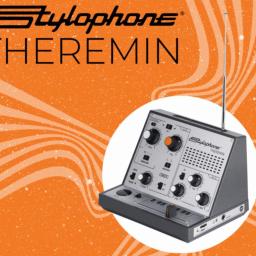 |
by Cheyenne MacDonald on (#6HNMF)
The theremin isn't an instrument known for being easy to learn or budget-friendly, but it is cool as hell - and a new synth from Dubreq could be a good starting point for anyone wanting to dip their toes into the theremin experience. The Stylophone Theremin is the latest addition to Dubreq's family of synths, and much like the classic contactless instrument, it has an antenna that responds to movement to create experimental sounds. It'll cost about $110 when it becomes available, and the company has started taking signups for pre-orders on its website.The Stylophone Theremin isn't a straight-up theremin but a synth that uses an element of the design. It has a single antenna to control pitch only, rather than the usual two (one for pitch and one for volume). It's battery-powered and portable, and has a built-in speaker and headphone/amp out. There's no word yet on when exactly it'll be released, but if you sign up for the pre-order, you'll be sent a link when it goes live.This article originally appeared on Engadget at https://www.engadget.com/stylophone-maker-dubreq-created-its-own-version-of-the-theremin-and-its-only-110-225104425.html?src=rss
|
 |
by Richard Lai on (#6HNMG)
Xreal, formerly Nreal, hosted one of the busiest booths at CES in recent years, so it's no surprise that the company is back with new AR glasses for CES 2024 - especially given the much anticipated launch of Apple's Vision Pro. Following the Nreal Light from 2019, the brand new Xreal Air 2 Ultra finally brings back 6DoF (six degrees of freedom) spatial tracking and hand tracking, along with a wider 52-degree FOV (field of view) and a 42-pixel-per-degree sharpness within an 80-gram titanium package. The firm goes as far as claiming that these specs make the $699 Air 2 Ultra a compelling alternative to the $3,499 Vision Pro.Unlike the standalone mixed reality headsets, the Air 2 series of glasses need to be powered by an external computing unit, such as a smartphone, a computer or Xreal's Beam module, via USB-C. While the earlier Air 2 Pro and Air 2 were positioned more as personal display wearables, the Air 2 Ultra emphasizes on its 6DoF spatial computing capabilities, meaning virtual objects can be mapped to the real world while you walk around.This is enabled by the front-facing dual 3D environment sensors, as well as the Qualcomm Snapdragon processors on the Samsung Galaxy S23 or S22, iPhone 15, or any Mac or Windows machine that can run Xreal's Nebula launcher. If you already own an Xreal Beam, you can also plug the Air 2 Ultra in for a 3DoF experience (read: just simple head tracking) with video playback or console gaming. Oddly enough, the company doesn't plan on supporting more smartphones at the moment, but it is prepping a new custom computing unit to go with the Air 2 Ultra at some point.XrealLike the Pro, the Air 2 Ultra's front layer supports three electrochromic dimming levels for increased immersion (without the need of a physical shield), as well as directional audio technology for improved privacy, and dual microphones for voice interaction. You'll find the same old Sony micro OLED panels with 1080p resolution per eye, a refresh rate of up to 120Hz (90Hz in 3D mode) and brightness of up to 500 nits (250 nits in 3D mode). Xreal added that these glasses can cast a virtual 2D screen "at an equivalent of 154 inches from a distance of 13 feet," and that they are "TUV Rheinland-certified for Color Accuracy, Eye Comfort, Low Blue Light, and Flicker Free usage."The $699 Xreal Air 2 Ultra is available for pre-order now, and if you bought an Nreal Light a while back, you're most likely eligible for a $100 discount. That's still not quite as aggressive as the Meta Quest 3's $500 base price, but then again, the Air 2 Ultra is largely aimed at developers for the time being. For one, Xreal's upcoming Unity-based NRSDK 2.2 won't be available until these glasses start shipping in March. Only then will developers be able to leverage the improved hand tracking, hand gesture recognition, spatial anchors, depth mesh and more. That is to say, Xreal will need to win over as many developers as possible to build up its mixed reality ecosystem, before getting consumers' attention at all, if not enterprises - the latter has been the case for HTC, which announced that it was sending VR headsets to the International Space Station back in November.This article originally appeared on Engadget at https://www.engadget.com/xreal-air-2-ultra-is-an-affordable-alternative-to-the-apple-vision-pro-apparently-220944571.html?src=rss
|
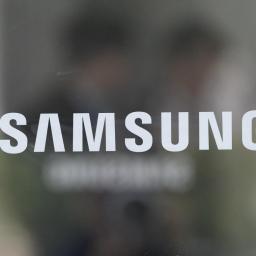 |
by Lawrence Bonk on (#6HNMH)
The holidays are over, but there's one winter tradition left. CES is back, once again turning Las Vegas into a haven for the tech-obsessed. Samsung is holding its annual CES press conference on January 8 at 2PM PT / 5PM ET, a day before exhibitions officially open. Engadget will have a dozen staffers on the ground at CES 2024 in Las Vegas, and you can follow along from home by watching the livestream on Samsung's Global Newsroom site.Samsung is, of course, a big company with its hands in just about every cookie jar, so you may wonder what the press conference will focus on. And you know the answer already. It's AI. The presser is titled AI for All: Connectivity in the Age of AI", which manages to somehow squeeze in the term twice.
|
 |
by Kris Holt on (#6HNJZ)
Automaker Hyundai is one of the many companies that are holding a press conference at CES 2024. You'll be able to find out more about some of the brand's intentions starting at 4PM ET on January 8. You can watch the livestream on Hyundai's YouTube channel.What to expectHyundai has already shed some light on what it will be focusing on at CES 2024. The automaker says it will share a blueprint for its vision of a hydrogen-powered energy ecosystem. Among other things, Hyundai will reveal a modular hydrogen toolbox that it says will help forge a clean hydrogen value chain.It's also looking beyond mobility to make people's everyday lives more comfortable with the help of "human-centered innovations." The company has pledged to share plans regarding software and artificial intelligence related to its theme of "Ease every way."In addition, Hyundai Mobis (the parts and service supplier for Hyundai, Genesis and Kia) says it will unveil 20 new pieces of mobility tech that are ready to go into mass production. Those include what it claims are the world's first in-vehicle rollable display and swivel display. In addition, it plans to show off a transparent display for cars that uses "holographic optical elements" tech.We're reporting live from CES 2024 in Las Vegas from January 6-12. Keep up with all the latest news from the show here.This article originally appeared on Engadget at https://www.engadget.com/how-to-watch-the-hyundai-ces-2024-press-conference-210053396.html?src=rss
|
 |
by Cheyenne MacDonald on (#6HNK0)
CES 2024 is here, and consumer audio brand Sennheiser is kicking off the week with a press conference a day before the show officially starts. Sennheiser's launch event will be livestreamed on YouTube on January 8, starting at 3:30PM ET/12:30PM PT. You can head over there to check it out, or tune in here for when the stream goes live.What we expectSennheiser hasn't said much about what it plans to unveil at CES 2024, but it's promised exciting new headphones." The company is responsible for some of our favorite over-ear wireless headphones and true wireless earbuds from the last few years, so that little bit of hype seems justified.Last year at CES, Sennheiser debuted its dialogue-enhancing Conversation Clear Plus earbuds, which are designed to provide hearing assistance in noisy spaces. The hearing aids can also stream audio, and have features such as active noise cancellation. Check back here to see what Sennheiser has in store for CES this time around.We're reporting live from CES 2024 in Las Vegas from January 6-12. Keep up with all the latest news from the show here.This article originally appeared on Engadget at https://www.engadget.com/how-to-watch-sennheisers-ces-2024-press-conference-203002174.html?src=rss
|
 |
by Lawrence Bonk on (#6HNH8)
It's CES 2024 week, in case you haven't noticed, and most of the major players in consumer tech are hosting their own shiny press events. TCL is no exception. The manufacturer is holding a livestream event on January 8 at 2PM ET. You can watch it on the company's website, just in case you aren't anywhere near Las Vegas.What we expectTCL is a huge company that manufacturers a wide range of devices across multiple product categories, though it's most famous for its TVs. The company promises to showcase over 100 cutting-edge products" throughout CES, including QD-Mini LED TVs, air conditioners, refrigerators, washing machines, mobile devices, commercial displays and much more.More specifically, TCL plans on unveiling one of the world's largest" QD-Mini LED TVs during the press conference. It already announced a 115-inch behemoth at IFA back in September, so this one would have to match or exceed that size.It also promises a spate of new home theater products and a new device ecosystem that's being advertised as one of the industry's first smart connected mobile device entertainment solutions." TCL's being cagey on this one, though the company did say the tech would integrate with smartphones, tablets, smart glasses and other gadgets.TCL also tends to announce one or two quirky things, like last year's RayNeo X2 AR glasses. The company has teased something regarding this product for CES, though it remains to be seen if it's a full hardware refresh or just a system update. The company did make an off-hand mention about powerful AI capabilities."Finally, there's a promise to show off the latest breakthroughs in display technology." This likely refers to the company's NXTPAPER tech, which optimizes displays for the human eye. This platform got a refresh back in February, but it looks like the color paper-like screen technology will be getting even more bells and whistles. In any event, we don't have long to find out.We're reporting live from CES 2024 in Las Vegas from January 6-12. Keep up with all the latest news from the show here.This article originally appeared on Engadget at https://www.engadget.com/how-to-watch-tcl-unveil-its-latest-devices-at-ces-2024-190011437.html?src=rss
|
 |
by Kris Holt on (#6HNFE)
It's Panasonic's turn to hold a CES 2024 press conference. The Japanese company, which dabbles in a wide range of products, is set to hold its showcase at 1PM ET on January 8. You'll be able to watch all of the Panasonic CES announcements live on the company's website.What we expectSustainable energy will be a main concern of Panasonic's showcase, according to a statement the company put out ahead of the show. The brand also plans to discuss its "circular economy initiatives designed to optimize the use of natural resources." Helping people to live healthier and more comfortable lives is a focus for Panasonic, which pledges to help people "discover a world of holistic wellbeing." In addition, it plans to highlight its Green Impact initiative, which involves reducing carbon dioxide emissions.There's always a chance that Panasonic may have some consumer-focused wares to reveal as well. We could see some of the company's latest cameras during its press conference, as was the case last year. Panasonic may also divulge more about its efforts to make batteries for electric vehicles, including Tesla models.We're reporting live from CES 2024 in Las Vegas from January 6-12. Keep up with all the latest news from the show here.This article originally appeared on Engadget at https://www.engadget.com/how-to-watch-the-panasonic-ces-2024-press-conference-180058304.html?src=rss
|
 |
by Cheyenne MacDonald on (#6HNFF)
While Apple's Vision Pro mixed reality headset is expected to arrive as soon as next month, the company itself has yet to confirm a release date. But, according to Bloomberg's Mark Gurman, there may be an official Vision Pro announcement within the next week or so" - conveniently timed to coincide with CES, which Apple always sits out. The headset has already begun shipping to US warehouses on a small scale, Gurman said.In the Power On newsletter, Gurman dug into the latest developments that suggest Apple will release the Vision Pro in February, as he recently predicted. Following up on his previous report that small groups of employees are being sent to headquarters for training on a new product, Gurman now reports that a three-hour meeting has been scheduled for all employees at Apple stores across the US on January 21, with training sessions and the arrival of new inventory racks planned throughout the week after.All the pieces seem to be lining up for what Gurman predicts is an imminent rollout" in the US. Other regions, including China, Canada and the UK may be the next in line after that.This article originally appeared on Engadget at https://www.engadget.com/apple-may-drop-some-vision-pro-news-in-the-next-week-ahead-of-its-imminent-release-175100795.html?src=rss
|
 |
by Mariella Moon on (#6HND2)
Acer has announced quite a lengthy list of new products at CES 2024 in Las Vegas, including a 57-inch monitor with curvature designed to increase your field of vision and make you feel more immersed in a game's environment. The king-sized Predator Z57 has a Dual UHD resolution - that's 7,680 x 2,160 pixels - a 120Hz refresh rate and a wide 32:9 aspect ratio. It's a MiniLED monitor that Acer says can achieve up to 1000 nit brightness, can produce highly accurate colors and can maximize light and dark contrast for realistic visuals and dark scenes with great picture quality.But let's go back to that massive screen real estate for a bit. While you can very well use the full display for a single purpose, the model's picture-by-picture capability lets you split it in half and show output from two different sources. Since it has two HDMI 2.1 ports that work with consoles like the PlayStation 5 and Xbox Series X, you could get two games running at the same time if that's something you'd want to try. You could also use its picture-in-picture capability to show an output separate from the main one in a smaller inset window. Predator Z57 will be available in North America and in Europe starting in the second quarter of the year with prices starting at $2,500 and 2,399, respectively.If you want a curved monitor but don't need all that real estate and think $2,500 is a bit too much, Acer has also launched a $900 34-inch display at the event. The Predator X34 V3 is a 34-inch MiniLED model with a 21:9 ultrawide QHD, or 3,440 x 1,440, resolution. It has a 180Hz refresh rate, which the company says can provide fluid gaming experiences with minimal ghosting. The model will also go on sale in the second quarter of the year.In addition, Acer seems to be making another attempt at making 3D gaming happen with the Predator SpatialLabs View 27. It's the latest entry to the brand's stereoscopic 3D display line that doesn't need glasses, though you can always switch to 2D output on its 4K screen. The model will be available in North America starting in the second quarter for $1,999 and in Europe within the first quarter of the year.We're reporting live from CES 2024 in Las Vegas from January 6-12. Keep up with all the latest news from the show here.This article originally appeared on Engadget at https://www.engadget.com/acer-introduces-a-massive-57-inch-ultrawide-monitor-at-ces-2024-170056345.html?src=rss
|
 |
by Lawrence Bonk on (#6HND3)
This year's CES 2024 trade show is off and running, filling Las Vegas with more tech than a giant LED dome. Consumer electronics giant Hisense is holding its own press conference this year, starting on January 8 at 12PM ET. The company will be livestreaming it directly from its own site, on this specific landing page.
|
 |
by Mariella Moon on (#6HND4)
Acer has debuted its latest laptops for its Aspire and Swift line of products at CES 2024 in Las Vegas. While the new devices each have their own features to offer, most of them have a couple of things in common: They're powered by Intel's new Core Ultra processors, the company's first chips with neural processing units that can accelerate AI tasks, and they come with dedicated keys that can summon Microsoft's Copilot AI assistant.One of the models now powered by Intel Core Ultra 7 processors is the Acer Aspire Vero, which is partly made from recycled materials, such as ocean-bound plastic for its 16-inch 2,560 x 1,600 screen. It can last for up to 10.5 hours on a single charge, has Wi-Fi 7 compatibility and has two USB-C ports. The laptop ships with Windows 11 that comes integrated with Copilot, which can be quickly accessed with the device's dedicated key. The model will be available in North America in April with prices starting at $750, and in Europe by March for at least 1,199.The new Acer Aspire Go 15 and Aspire Go 14, on the other hand, now come with Intel Core i3 N-Series processors, though the latter can be equipped with AMD Ryzen 7000 Series chips instead. They both have the new dedicated Copilot keys and Wi-Fi 6 connectivity, though the smaller model has a WUXGA display, while the bigger one has an FHD screen. The 15-inch and the 14-inch laptops are coming out in February with prices starting at $250.Acer has also announced its updated Swift laptop line, starting with the new Swift Go 16 and Swift Go 14 models powered by Intel Core Ultra processors and Intel Arc built-in GPUs. Acer calls them "AI PCs" with dedicated Copilot keys and AI-boosted video conferencing features, such as background blur and automatic framing. The 16-inch model has a 3.2K OLED display, while the 14-inch Swift Go has a 2.8K OLED screen. They can both be opened up to 180 degrees and can support LPDDR5X memory up to 32GB in size and SSDs up to 2TB. The models are coming out in the North America in March and will set buyers back $750 and up.Finally, the Acer Swift X 14 now comes with Intel Core Ultra H-Series processors, NVIDIA GeForce RTX 40 Series GPUs, a 2.8K OLED display and, of course, a dedicated Copilot key. The model was designed for heavy tasks, including 3D rendering, video editing and high-quality live streaming. Similar to the Swift Go laptops, it has AI-augmented video conferencing features and supports memory up to 32GB in size, but users will have to make do with 1TB SSDs. It will be available starting in February for at least $1,400.We're reporting live from CES 2024 in Las Vegas from January 6-12. Keep up with all the latest news from the show here.This article originally appeared on Engadget at https://www.engadget.com/acer-refreshes-its-swift-and-aspire-laptops-with-intel-core-ultra-and-dedicated-copilot-keys-170029734.html?src=rss
|
 |
by Steve Dent on (#6HND5)
Two weeks ago I was thinking about how to test Canon's entry-level EOS R8 and EOS R100 cameras in the miserable French weather when I had a thought: Hey, why not take a vacation to a warmer place to test these models?" After Googling the nearest location with 75 degree-plus weather, I found myself in the balmy Canary Islands. It turned out to be a great spot to take photos as well, so everything came together perfectly.Both cameras have far different price points, currently around $450 and $1,300, respectively. They're still the company's least expensive new full-frame and crop-sensor mirrorless cameras, though, and Canon markets them both as ideal for tourism and adventure - so I figured that this is a great way to test the capabilities of both.Like any potential buyer, I wanted to see if they're better than a smartphone for traveling - specifically if the larger sensors can counter a smartphone's AI computational photography. I also looked at ease of use and automated operation, flexibility for sunny beaches or dark bars, vlogging and more. After trying them out at some of Gran Canaria's most scenic spots, I found one of them to be a camera worth buying and one, not so much.Smartphone computational photographyBefore detailing my experience with these cameras, I want to talk about computational and AI photography. Most smartphones incorporate these tricks, like taking multiple photos in quick succession to get the best one or improve low-light shots. They often deliver better-exposed shots with superior white balance, too. There is a price to be paid though in terms of over-sharpening and other artifacts that can give photos an artificial look.I tested this by taking a few shots with both a Pixel 7a and a camera in the auto settings, as many travel photographers do. As I suspected, at first glance the shots on the smartphone look better, but a closer look reveals superior photos from the camera in terms of detail, color accuracy, skin tones, true noise levels and more. I believe it's important for buyers to understand this and have a basic idea of how to adjust images in post, or their new purchase could end up in a drawer.Canon EOS R100Steve Dent for EngadgetThe 24-megapixel APS-C EOS R100 seems like it should offer a lot for travelers. It's small and light at 356 grams, so with a compact lens, it's not a huge burden compared to a smartphone. At the same time, the larger sensor potentially offers superior quality and the flexibility of interchangeable lenses.The small size comes with big compromises, though. Handling is mediocre and the settings aren't super intuitive. I'd love to tell you could just control it on the screen instead, but the display isn't touch sensitive and is nearly useless for vlogging as it's fixed in place too. The electronic viewfinder has low magnification and is relatively dim, so it's hard to use in the sun - especially with glasses on - unfortunate if you're on the beach, for example.It has just a single UHS-I card slot, so storage is relatively cheap but you won't have a backup if the card glitches. You get a microHDMI jack to output to a TV, along with a mic input, but no headphone jack. The USB-C 2.0 port can only transfer files, not charge the camera or let you use it as a webcam.It supports Canon's smaller LP-E17 battery, but is rated for a decent 430 shots on a charge and many more in real life. One big benefit is a built-in flash with exposure compensation to dim it down - though settings are limited in the fully automatic mode most beginners will use.Performance and videoSteve Dent for EngadgetThe R100 has anemic performance, to put it mildly. It shoots and focuses at just 3.5 fps max, the slowest in its category. It feels sluggish when shooting RAW photos, even in single shot mode. Luckily, it's much more reactive when shooting JPEGs.The sensor has some of the worst rolling shutter I've seen in silent mode. Luckily, it does have a first-curtain mechanical shutter that eliminates that, and the silent mode setting is hidden away where many folks will never find it.There's eye-detection AF for people only, and it works well if your subject is close to the camera. That's OK for family photos and the like, but not ideal for candid or street shots on your trip. The autofocus isn't great in low light either, but is otherwise fairly reliable.The R100 is OK for grabbing the odd travel video, but not suitable for content creators. Max resolution is 4K 24p, but that comes with a 1.5 times crop, or 2.2 times with electronic stabilization, killing the bokeh advantage of a large sensor. And there's no option for log, 10-bit, or any other high-end video features. That said, 4K video is relatively sharp and colors are nice and accurate.Image qualityThe bright spot of the EOS R100 is photo quality. As you'd expect from Canon, image quality is excellent with warm skin tones and accurate colors straight out of the camera. It can also handle low-light shooting well thanks to the large sensor, with little noise up to ISO 6400. All that will help you take great shots of mountains, the beach, nightlife and other typical vacation scenarios. The ability to shoot RAW, along with the mechanical shutter, is another good reason to get this model over most smartphones. And finally, the built-in flash is there to help you get nice looking images even in dark environments.EOS 100 wrap-upSo would I recommend the EOS R100 for travel, particularly over a smartphone? Sorry Canon, but no. It's too stripped down to replace a good smartphone, and while it does deliver better image quality, it's too complicated. Instead, I'd suggest Canon's older EOS M50 Mark II, as it offers the same image quality but has a touchscreen, is smaller, and still offers good lens options. Sony's A6100 has better autofocus and video options, and if you can afford a little more, Canon's own R50 is the same size but far more capable.EOS R8Steve Dent for EngadgetLike the EOS R100, Canon's R8 is the company's most stripped-down and cheapest new full-frame camera. It gives you the same sensor and image quality as the $2,000 EOS R6 II for $700 less, but takes away some of the speed, video features and more.The main thing lacking in the R8 is in-body stabilization, so it relies on lens and electronic shake reduction - but that actually worked pretty well for me. It's also missing a full mechanical shutter, but does have a front-curtain shutter that eliminates rolling shutter. The EVF is far more basic, with lower resolution and magnification.On the plus side, it has the same flip-out display as the R6 II, meaning it can serve as a capable vlogging and selfie camera. It also has a decent range of manual controls, with dual dials for the main settings, a full range of manual and auto settings and a dedicated photo and video switch. It's also smaller and considerably lighter than the R6 II, so it's a better travel option.It has both mic and headphone jacks, along with a microHDMI port. It captures photos at high speeds to a UHS-II card, but there's only one slot. The biggest compromise is a battery that's the same as the one in the R100. Given the extra power demands of the larger sensor, it delivers only 290 shots on a charge, max and under an hour of video shooting.Performance and videoSteve Dent for EngadgetFor a budget camera, the R8 is fast. It supports only 6 fps with the electronic curtain shutter, but can handle 40 fps bursts in electronic mode. There's significant rolling shutter, though, so keep that in mind for action shots.The R8 uses Canon's latest AI subjection recognition tech, meaning it can track both animals and humans accurately. It also comes with an auto setting that lets the camera determine the subject and follow it accordingly.I think autofocus is one of the most important features for travel photography, and the R8 delivers. It can locate and lock onto various subjects and track them rapidly around the frame. That makes it more capable than other recent models like the Sony's A7 IV and the Nikon Z6 II. Focus can be selected via the touchscreen with your eye to the EVF, which works well, but be sure to enable the touch and drag" setting in the menu.It's also a good video and content creation camera, with a few caveats. You can shoot uncropped video at up to 4K 60p, and it supports Canon's C-Log 3 with 10-bit capture, along with HDR PQ. 120 fps ultra slow mo is available at 1080p. That said, 4K 60p has some pixel binning, so it's less sharp than the 30p mode. The lack of in-body stabilization also makes it less useful for vlogging, because electronic stabilization adds a 1.25 times crop..Image qualityImage quality is a strong point with the R8 too, especially for tourists who want far more than a smartphone can offer. It's a great people and scenery-shooting camera, with rich skin hues and accurate colors. At the same time, the full-frame 24-megapixel sensor is great in low light, delivers plenty of detail and offers beautiful background bokeh. Serious photographers can grab RAW photos and get the same level of detail found on more expensive cameras.EOS R8 wrap-upCanon's entry-level full-frame R8 is definitely worth taking on your voyages. It offers impressive image quality and is great for content creators, too. The main drawback is the lack of stabilization and a small battery, but you'll be fine if you carry an extra battery or two. Rival options include Nikon's Z5, which has image quality on par but inferior autofocus and video, and if you're more into vlogging, the Panasonic S5 is a better option for less money. If you're looking for the best affordable hybrid full-frame camera, the Canon R8 is a great choice.This article originally appeared on Engadget at https://www.engadget.com/traveling-with-canons-entry-level-eos-r8-and-r100-mirrorless-cameras-160054076.html?src=rss
|
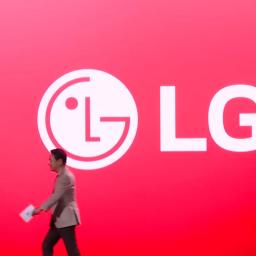 |
by Will Shanklin on (#6HND6)
LG has always had a significant presence at CES, with its consumer electronics and appliances all considered fair game for the annual Las Vegas tech convention. Of particular interest to Engadget readers are the Korean company's super-thin Gram laptops, OLED TVs and soundbars. You can see what LG has in store for CES 2024 right here on Monday at 11AM ET.What to expect at LG's CES 2024 press conferenceLG's TV lineup from last year included the OLED M3, which won Engadget's Best of CES in Home Theater. The 97-inch television uses the company's proprietary Zero Connect wireless transmission tech, which LG claims can reach up to three times the speed of Wi-Fi 6. The wireless setup lets you mount the set in otherwise hard-to-reach places like above a fireplace.Last year's CES also debuted LG's Gram Style, a $1,499 and up laptop with an exceptionally light glass design and a disappearing" trackpad. In addition, it launched the Gram Ultraslim, the company's thinnest notebook, and a spec bump update for the standard Gram laptop lineup.LG's soundbar lineup from the last annual event included the premium SC9 ($1,000) and the compact and more affordable ($300) SE6. The more expensive model reserved its best features for pairing with LG TVs, including Wow Orchestra (syncs the display's speakers with the soundbar), Wow Interface (lets you control the soundbar's settings from the TV), and Wowcast (connects to its TVs over Wi-Fi, ditching cables). Meanwhile, the cheaper model included Dolby Atmos sound, wrapped in a cloth-wrapped design with round edges.LG's CES 2024 livestreamYou can see what LG has in store for CES 2024 below at 11AM ET on Monday. Engadget is on the ground in Las Vegas and will have all the news and hands-on from this year's extravaganza.We're reporting live from CES 2024 in Las Vegas from January 6-12. Keep up with all the latest news from the show here.This article originally appeared on Engadget at https://www.engadget.com/watch-lg-announce-new-tvs-laptops-and-soundbars-at-ces-2024-here-160052207.html?src=rss
|
 |
by Lawrence Bonk on (#6HND7)
It's that time of year again. The annual CES trade show in Las Vegas is upon us and NVIDIA is holding a major press conference that will offer details regarding a spectrum of cutting-edge technologies." It goes down on Monday, January 8, at 8AM PT / 11AM ET, the day before CES 2024 officially kicks off. You can watch it directly on NVIDIA's website, or you can hit up the company's YouTube page or Twitch channel.
|
 |
by Cheyenne MacDonald on (#6HND8)
Some iPhone owners who filed claims in Apple's $500 million class action settlement over battery throttling have reportedly started to receive their cuts of the payout. In 2020, Apple agreed to settle a 2017 lawsuit that accused the company of intentionally reducing older iPhones' performance without properly disclosing to consumers that it was doing so. At the time of the settlement, it was estimated that iPhone owners would get payments of around $25 per claim. But, according to MacRumors and a direct deposit screenshot shared by one user, individual payments as high as $92 started arriving this weekend.The settlement, which only applies to US iPhone owners, covers iPhone 6, 6 Plus, 6s, 6s Plus and SE as long as they ran iOS 10.2.1 or later before December 21, 2017, along with iPhone 7 or 7 Plus that ran iOS 11.2 or later by the same cutoff date. Claims had to be filed by October 2020. People who owned multiple models that meet these criteria were allowed to put in separate claims for each - meaning some will have a series of payments from Apple to look forward to.If you haven't received a payment yet, rest assured it's probably coming soon. In a December update posted on the settlement website, it says payments should start dropping in January 2024, which lines up with reports that they've started to trickle in.This article originally appeared on Engadget at https://www.engadget.com/your-payments-from-apples-batterygate-settlement-may-finally-be-on-the-way-153655660.html?src=rss
|
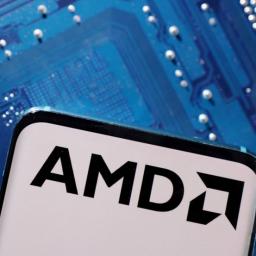 |
by Sarah Fielding on (#6HNBT)
AMD always brings something interesting to CES - hopefully CES 2024 is no different. The company will livestream its press conference on January 8 at 10AM ET. It will feature AMD's chair and CEO, Dr. Lisa Su, and the company's senior vice president and GM of computing and graphics, Jack Huynh.What we expectLike many companies, AMD says its focus for the press conference on AI - in this case, as it pertains to personal computers. The livestream's landing page says that "AMD is powering the end-to-end infrastructure that will define the AI era, from cloud installations to enterprise clusters, AI-enabled intelligent embedded devices and PCs."If all of that sounds very vague and boring, don't fret: While we don't know exactly what AMD plans to unveil at CES 2024, it's usually the time that the company unveils the CPUs and GPUs that will be in laptops through the coming year. We're hoping to see more of the same, and there's a high chance we'll get some desktop chips as well, in the form of new CPUs with high-end integrated graphics.AMD unveiled a range of gear at CES 2023, including the Ryzen 9 7945HX processor, the RX 7700S and RX 7600S for thin and light notebooks and the Radeon RX 7600M XT and 7600M for high fps 1080p gaming.Tune in to AMD's live stream here to see what new offerings it has this year.We're reporting live from CES 2024 in Las Vegas from January 6-12. Keep up with all the latest news from the show here.This article originally appeared on Engadget at https://www.engadget.com/watch-amds-ces-2024-press-conference-focused-on-ai-in-personal-computers-150016783.html?src=rss
|
 |
by Cheyenne MacDonald on (#6HNBV)
Hours before sunrise on Monday morning, United Launch Alliance's brand spankin' new Vulcan Centaur rocket is scheduled to make its maiden flight carrying a historic passenger: Peregrine, the first American lunar lander to be sent to the moon in over 50 years. And its mission could mark a turning point in humankind's exploration of the cosmos. Peregrine is not a NASA spacecraft, but one developed by Pittsburgh-based Astrobotic, a private company. If it survives touchdown, Peregrine will be the first commercial craft to successfully land on the moon - or any planetary body outside of Earth, for that matter.Astrobotic is among a small group of companies that have been selected to carry out lunar deliveries for the space agency over the next few years as part of NASA's new Commercial Lunar Payload Services (CLPS) program. Peregrine Mission 1, expected to launch January 8 at 2:18AM ET, is the first of these operations under a $79.5 million contract with the space agency. But it's a wholly commercial endeavor, and alongside the five payloads it'll deliver for NASA to support the upcoming Artemis missions, Peregrine will have cargo for other clients on board too, at a cost of $1.2 million per kilogram (roughly 2.2 pounds). That includes mini rovers and science instruments, collections of art and archival material, a physical bitcoin" and, controversially, human remains.Peregrine is headed for the moon's nearside, the hemisphere that is always facing Earth. The 6-foot-tall, 8-foot-wide lander will (hopefully) touch down softly in a region named Sinus Viscositatis - the Bay of Stickiness" - for the mysterious domes there that are thought to have been formed long ago by thick silicic lava. These peculiar features, called Gruithuisen Domes, don't match up with the surrounding basaltic terrain, nor is the moon home to the ingredients so far known to give rise to silicic volcanoes.AstroboticThe formation of the domes is a scientific mystery we are still working to understand," said CLPS project scientist Paul Niles in a briefing on Thursday ahead of the launch. Peregrine will land near the domes on a patch of lunar mare, or the dark features created by hardened basaltic lava flows that we can see from Earth. The NASA payloads on board consist of a Laser Retroreflector Array (LRA), Neutron Spectrometer System (NSS), Linear Energy Transfer Spectrometer (LETS), Near InfraRed Volatiles Spectrometer System (NIRVSS) and Peregrine Ion-Trap Mass Spectrometer (PITMS). These instruments will gather data to help characterize the local environment.Three of our instruments will collect data on lunar volatiles using different techniques," Niles said. Two instruments will provide perspectives on the radiation environment at the lunar surface, helping us better prepare to send crewed missions back to the moon. We'll also learn information about the composition of the surface by evaluating its mineralogy." Later, NASA will send another suite of instruments to the summit of Gruithuisen Domes.As far as science deliveries are concerned, Peregrine will also carry a payload for Agencia Espacial Mexicana (AEM), the Mexican Space Agency. Its fleet of five mini rovers, each measuring just shy of 5 inches wide, will be the first Latin American science instruments to make it to the surface of the moon, according to Astrobotic. Carnegie Mellon University's 4-pound Iris rover is hitching a ride on Peregrine too, with plans to snap photos that it'll send back home. And the German Aerospace Center (DLR) is sending its M-42 radiation detector, which is intended to measure how much radiation a human would be exposed to on a roundtrip mission to the moon.Among the non-science payloads, ULA's Vulcan Centaur and Peregrine will be ferrying small portions of human remains for the space memorial companies Celestis and Elysium Space. Celestis has two separate memorial destinations planned for the trip: one, Tranquility," will land on the moon with Peregrine, while another, Enterprise," will continue on to deep space with the Centaur upper stage after it separates from the lunar lander. Flights like these that go beyond Earth's immediate vicinity start at just under $13,000, and potential clients are given the option to send up symbolic amounts of either human ashes or DNA.Astrobotic/ULAOne of the luminaries whose DNA is headed to the lunar surface will be 2001: A Space Odyssey co-writer and science fiction author, Arthur C. Clarke. On the Enterprise flight are the remains of several key figures from the Star Trek franchise, including series creator Gene Roddenberry, his wife, Majel Barrett Roddenberry, and their son Eugene Rod" Roddenberry, plus Nichelle Nichols (Lt. Uhura of the original series) and her son, Kyle Johnson. Elysium has been less forthcoming about whose remains it'll be sending.There's been some backlash about the idea of turning the moon into a memorial site. Navajo Nation President Buu Nygren spoke out against the upcoming mission after hearing about the plan, calling it tantamount to desecration" for the many cultures who consider the moon to be sacred, Arizona Public Radio reported.In response to questioning led by Reuters' Joey Roulette during the NASA briefing on Thursday, members of the space agency repeatedly reiterated that the decision of which payloads to fly fell solely on Astrobotic. They don't have to clear those payloads with us," CLPS Program Manager Chris Culbert said. These are truly commercial missions. It's up to them to sell what they can sell."The issue highlights one of the potential downsides to relying on contractors, and it'll undoubtedly rear its head again as NASA leans more heavily on the commercial industry for future missions. While NASA may not be in the position to approve what payloads are included alongside its own on commercial missions, Culbert added that the teams obviously have a lot of discussions about how the payloads fit together."The rest of the 20 total payloads are a mix of mementos and items representing Earth and the achievements of humanity. Astrobotic partnered with DHL to curate a moonbox" of keepsakes that will fly with Peregrine, including items such as photographs, literature and even a chunk of Mount Everest. Hungary's Puli Space Technologies and the UK's SpaceBit are sending plaques to the lunar surface, while the Japanese space company Astroscale has filled a Lunar Dream Capsule" with 185,872 messages from children from around the world."In addition to its rover, Carnegie Mellon created what it's calling the first museum on the moon." The University's MoonArk project, a small cylinder made up of four chambers that contain hundreds of images, poems, music, nano-objects, mechanisms and samples from Earth," will remain on the Peregrine lander where it can be appreciated by future visitors along with the other stationary objects on board. Similarly, Peregrine will carry the Arch Mission Foundation's Lunar Library 2, which it calls an ultra-durable archive of humanity." Wikipedia is in there, as well as other major collections of Earthly information and human languages.And, there are two bitcoin projects going to the moon with Peregrine because crypto is, apparently, inescapable: a physical bitcoin engraved with its private key, from the Seychelles cryptocurrency exchange BitMEX; and US-based BTC Inc.'s Bitcoin Magazine Genesis Plate, which includes a copy of the first block of bitcoin ever mined.Once Peregrine reaches lunar orbit, it'll remain there for a few weeks before making its attempt to land on the surface. That's expected to happen on February 23. Considering the US hasn't put a lander on the moon since the days of the Apollo mission, it's a pretty big deal. But, it's risky business. When it comes to moon landings, there have been far more unsuccessful attempts than successful ones. Landing on the moon is extremely difficult," Culbert said during NASA's briefing. We recognize that success cannot be ensured."Regardless, NASA and its commercial partners aim to keep trying, and in close succession at that. Peregrine Mission 1 will be followed by the second of NASA's CLPS missions in February, led by Intuitive Machines. After that, there are plans for at least four more CLPS lunar launches before the end of 2024.This article originally appeared on Engadget at https://www.engadget.com/peregrine-mission-1-heralds-the-beginning-of-the-moons-commercialization-140038460.html?src=rss
|
 |
by Cheyenne MacDonald on (#6HN1M)
The Federal Aviation Administration (FAA) has ordered airlines to temporarily ground some Boeing 737 Max 9 planes for safety inspections after an Alaska Airlines plane lost a cabin panel during a flight on Friday with about 180 people on board. The plane, which had only been in service since November, according to the New York Times, was able to safely land back at Portland International Airport in Oregon, where it had taken off from. There were no major injuries, though the Alaska division of the Association of Flight Attendants said workers described explosive" decompression in the cabin and reported one flight attendant sustained minor injuries.The FAA is requiring immediate inspections of certain Boeing 737 Max 9 planes before they can return to flight," FAA Administrator Mike Whitaker said. Safety will continue to drive our decision-making as we assist the NTSB's investigation into Alaska Airlines Flight 1282."Immediately following the incident, Alaska Airlines CEO Ben Minicucci put out a statement saying the company would be grounding its fleet of 65 Boeing 737-9 aircraft for what it expects to be a few days as it conducts safety checks. Each aircraft will be returned to service only after completion of full maintenance and safety inspections," Minicucci. The FAA order extends the grounding to approximately 171 airplanes worldwide" that are either operated by US airlines or in US territory.Minicucci also said that the National Transportation Safety Board is investigating what happened with Flight 1282 and we will fully support their investigation." The plane had been on its way to Ontario, California. Reuters, citing FlightRadar24, reported that the blowout occurred at around 16,000 feet. In social media posts shared with Reuters and the NYT, passengers can be seen sitting right next to the gaping hole and the fully exposed sky.Boeing's 737 Max was previously grounded for almost two years after fatal crashes in 2018 and 2019. All 189 people on board the plane were killed in the 2018 crash in Indonesia, and another 157 died in the 2019 crash in Ethiopia. In 2021, Boeing agreed to pay $2.5 billion in a settlement with the Department of Justice to avoid criminal charges over the crashes.This article originally appeared on Engadget at https://www.engadget.com/faa-grounds-roughly-171-boeing-737-max-9-planes-after-a-cabin-panel-blew-out-during-flight-210331403.html?src=rss
|